
109 minute read
General Interest
Red Barber
e Life and Legacy of a Broadcasting Legend
JUDITH R. HILTNER AND JAMES R. WALKER
Born and raised in rural Mississippi and the even balmier climes of central Florida, Red Barber, at the age of thirty-two, became one of New York City’s most in uential citizens as the play-by-play announcer for the Brooklyn Dodgers. When he arrived in 1939, Barber brought the down-home drawl and idioms of his southern roots to the borough, where residents said they could walk down any street and never miss a pitch, because his voice wafted out of every window and every passing car. From his colorful expressions like “Rhubarb” and “Sitting in the catbird seat” to his vivid use of similes—a close game was “tighter than a new pair of shoes on a rainy day”—Barber’s in uence on his contemporaries and the many generations of broadcasters who followed him cannot be overstated. But behind all the base hits, balls, and strikes lies a compelling story that dramatizes the shifting expectations and roles of a public gure—the sports broadcaster—as he adapted to complex cultural changes throughout the course of twentiethcentury American life.
Red Barber follows the trajectory of Barber’s long career from radio and television play-by-play man for the Cincinnati Reds, Brooklyn Dodgers, and New York Yankees to his work calling college and professional football games, his nine-year tenure as director of sports for CBS Radio, and his second acts as an Episcopal lay reader, sportswriter, and weekly guest with Bob Edwards on NPR’s Morning Edition. is talented public gure was also a private man committed to rigorous self-examination and willing to evolve and grow under the in uence of changing times. When the Dodgers rst signed Jackie Robinson and smashed the color barrier in Major League Baseball, Barber struggled to overcome the racism he had absorbed from his culture as a child. But after observing the vicious abuse Robinson endured from opposing fans, Barber became an ardent supporter of him and the many Black players who followed. Barber was also bothered deeply by the strains that his single-minded careerism imposed on his family. He was challenged to navigate longtime family tensions after his only child, Sarah, came out as a lesbian. And his primary role during the later years of his life was caretaking for his wife, Lylah, during her decline from Alzheimer’s disease, at a time when the ailment was something many families concealed.
Ultimately Red Barber traces the career of a true radio and television pioneer who was committed to the civic responsibility of mass media. Barber rmly believed the most important role of a broadcaster was telling the truth and promoting public well-being.







“This complete and carefully researched biography is both merited and most welcome.”—Bob Costas
“With Red Barber the authors have given this complicated, important figure the biography he deserves.”—John Thorn, o cial historian, Major League Baseball
Judith R. Hiltner is a professor emeritus of literature and languages at Saint Xavier University and the author of books and articles on American literature and culture, including critical and biographical studies of Herman Melville, Philip Freneau, and Deborah Sampson. James R. Walker is professor emeritus of communication at Saint Xavier University and a past executive director of the International Association of Communication and Sport. He is the author of several books, including Crack of the Bat: A History of Baseball on the Radio (Nebraska, 2015), and is the coauthor of Center Field Shot: A History of Baseball on Television (Nebraska, 2008).
APRIL 552 pp. • 6 x 9 • 26 photographs, 2 illustrations, index $36.95T • hardcover • 978-1-4962-2285-5 $47.00 Canadian / £27.99 UK
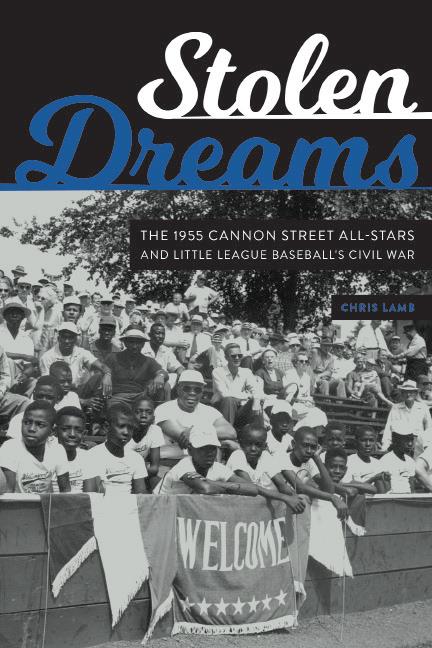
Chris Lamb is chair of the Department of Journalism and Public Relations at Indiana University–Indianapolis. He is the editor, author, or coauthor of twelve books, including Conspiracy of Silence: Sportswriters and the Long Campaign to Desegregate Baseball (Nebraska, 2021), Sports Journalism: A History of Glory, Fame, and Technology (Nebraska, 2020), and From Jack Johnson to LeBron James: Sports, Media, and the Color Line (Nebraska, 2016).
APRIL 400 pp. • 6 x 9 • 25 photographs, index $34.95T • hardcover • 978-1-4962-1945-9 $44.00 Canadian / £26.99 UK
ALSO OF INTEREST
Conspiracy of Silence
Sportswriters and the Long Campaign to Desegregate Baseball Chris Lamb $34.95 • paperback • 978-1-4962-2937-3
Stolen Dreams
e 1955 Cannon Street All-Stars and Little League Baseball’s Civil War
CHRIS LAMB
When the eleven- and twelve-year-olds on the Cannon Street YMCA All-Star team registered for a baseball tournament in Charleston, South Carolina, in June 1955, it put the team and the forces of integration on a collision course with segregation, bigotry, and the southern way of life. White teams refused to take the eld with the Cannon Street All-Stars, the rst Black Little League team in South Carolina. e Cannon Street team won the tournament by forfeit and advanced to the state tournament. When all the white teams withdrew in protest, the Cannon Street team won the state tournament. If the team had won the regional tournament in Rome, Georgia, it would have advanced to the Little League World Series. But Little League o cials ruled the team ineligible to play in the tournament because they had advanced by winning on forfeit and not on the eld, denying the boys their dream of playing in the Little League World Series. Little League Baseball invited the Cannon Street All-Stars to be the organization’s guests at the World Series, where they heard spectators yell, “Let them play! Let them play!” when the ballplayers were introduced. is became a national story for a few weeks but then faded and disappeared as Americans read of other civil rights stories, including the torture and murder of fourteenyear-old Emmett Till.
Stolen Dreams is the story of the Cannon Street YMCA All-Stars and of the early civil rights movement. It’s also the story of centuries of bigotry in Charleston, South Carolina—where millions of enslaved people were brought to this country and where the Civil War began, where segregation remained for a century after the war ended and anyone who challenged it did so at their own risk.
“[Stolen Dreams] meticulously documents an important moment, and team, that few people will know but should. It’s about the collision of racism and baseball, years after Jackie Robinson broke the color barrier, and shows just how far Blacks had left to go to be accepted in America’s pastime. Lamb writes this story with a ection, grace, and skill.”—Mike Freeman, editor of race and inequality at USA Today
“Chris Lamb takes a forgotten baseball tournament and a forgotten moment in the civil rights struggle and spins them into an unforgettable story, proving, as Martin Luther King Jr. might have said, that the long arc of a batted ball bends toward justice. With impressive research and sharp insight, Lamb illustrates once again the important role baseball plays in understanding and shaping American culture.” —Jonathan Eig, best-selling author of Opening Day: The Story of Jackie Robinson’s First Season
e Umpire Is Out
Calling the Game and Living My True Self
DALE SCOTT WITH ROB NEYER FOREWORD BY BILLY BEAN
Dale Scott’s career as a professional baseball umpire spanned nearly forty years, including thirty-three in the Major Leagues, from 1985 to 2017. He worked exactly a thousand games behind the plate, calling balls and strikes at the pinnacle of his profession, working in every Major League Baseball stadium, and interacting with dozens of other top- ight umpires, colorful managers, and hundreds of players, from future Hall of Famers to one-game wonders.
Scott has enough stories about his career on the eld to ll a dozen books, and there are plenty of those stories here. He’s not interested in settling scores, but throughout the book he’s honest about managers and players, some of whom weren’t always perfect gentlemen. But what makes Scott’s book truly di erent is his unique perspective as the only umpire in the history of professional baseball to come out as gay during his career. Granted, that was after decades of remaining in the closet, and Scott writes vividly and movingly about having to “play the game”: maintaining a facade of straightness while privately becoming his true self and building a lasting relationship with his future husband. He navigated this obstacle course at a time when his MLB career was just taking o —and when North America was consumed by the HIV/AIDS epidemic.
Scott’s story isn’t only about his leading a sort of double life, then opening himself up to the world and discovering a new generosity of spirit. It’s also a baseball story, lled with insights and memorable anecdotes that come so naturally from someone who spent decades among the world’s greatest baseball players, managers, and games. Scott’s story is fascinating both for his umpiring career and for his being a pioneer for LGBTQ people within baseball and across sports.
“Dale Scott was both consistent and approachable, perhaps the two most important qualities for an umpire. Dale’s personal story is inspirational, but his book also features vivid game stories from a truly great run at the top of his profession.”—David Cone
“Dale’s personal story di ers dramatically from those of his umpiring colleagues. And yet, what also shines through is what he and so many of us have in common: an abiding love of baseball and an appreciation for what the game has meant to our lives. This is a textured story, both entertaining and meaningful. And told with uncommon grace.”—Bob Costas Dale Scott worked as a Major League umpire until 2017, when—due to multiple concussions—he retired. His career included three World Series, three All-Star Games, six League Championship Series, twelve Division Series, and over ninety-one post season games. An Oregon native, he lives in Portland with Michael, his husband, and their yellow Lab, Wylie. Rob Neyer serves as commissioner of the West Coast League and currently hosts the weekly podcast SABRCast with Rob Neyer. He has also written or cowritten seven books, including Power Ball: Anatomy of a Modern Baseball Game, winner of the 2018 Casey Award for Best Baseball Book of the Year. Billy Bean is vice president and special assistant to the commissioner of Major League Baseball.
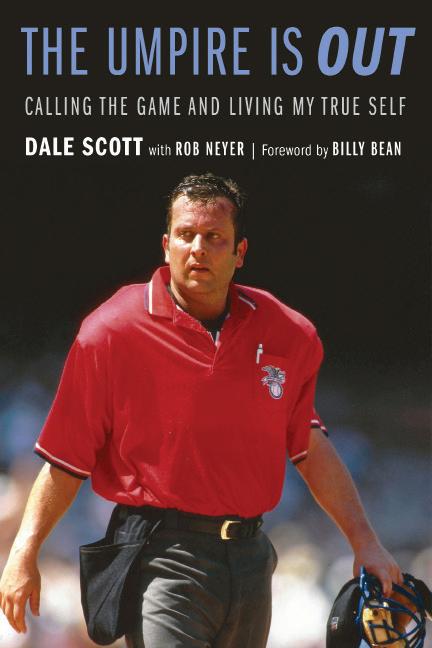
MAY 320 pp. • 6 x 9 • 25 photographs, 1 appendix, index $34.95T • hardcover • 978-1-4962-3044-7 $44.00 Canadian / £26.99 UK








C. Thomas Shay is a senior scholar in the Department of Anthropology at the University of Manitoba. He is the author of e Itasca Bison Kill Site: An Ecological Analysis, as well as numerous articles and book chapters.
JULY 332 pp. • 6 x 9 • 52 color photographs, 5 b&w photographs, 14 illustrations, 11 maps, 1 table, 1 graph, glossary, appendix, index $29.95T • paperback • 978-1-4962-2338-8 $38.00 Canadian / £22.99 UK
ALSO OF INTEREST
North American Wildland Plants
A Field Guide James Stubbendieck, Stephan L. Hatch, Neal M. Bryan, and Cheryl D. Dunn $35.00 • paperback • 978-0-8032-9965-8
Under Prairie Skies
e Plants and Native Peoples of the Northern Plains
C. THOMAS SHAY
In Under Prairie Skies, C. omas Shay asks and answers the question: What role did plants play in the lives of early inhabitants of the northern Great Plains? Since humans arrived at the end of the Ice Age, plants played important roles as Native peoples learned which were valuable foods, which held medicinal value, and which were best for crafts.
Incorporating Native voices, ethnobotanical studies, personal stories, and research techniques, Under Prairie Skies shows how, since the end of the Ice Age, plants have held a central place in the lives of Native peoples. Eventually some groups cultivated seed-bearing annuals and, later, elds of maize and other crops. roughout history, their lives became linked with the land, both materially and spiritually.
“Under Prairie Skies is a beautiful love story, pure and simple. C. Thomas Shay writes with deep a ection, profound knowledge, and obvious fascination about the plants, places, and Native peoples of the North American prairies.”—Nancy J. Turner, distinguished professor emerita in the School of Environmental Studies at the University of Victoria
“As engaging as a National Geographic documentary! Blending science and the humanities, Under Prairie Skies takes its place alongside such classics as Melvin Gilmore’s Prairie Smoke and Robin Wall Kimmerer’s Braiding Sweetgrass.”—Lance M. Foster, tribal historic preservation o cer and vice chairman of the Iowa Tribe of Kansas and Nebraska
“C. Thomas Shay skillfully blends ecology, archaeology, botany, and traditional knowledge, revealing the entangled histories of northern plains peoples and environments. Focusing on the wild and domesticated plants they used, he tells a compelling story of human resourcefulness and resilience.”—William Green, former state archaeologist of Iowa and director emeritus of the Logan Museum of Anthropology at Beloit College
“The author’s personal vignettes add warmth, scientific insight, and sometimes drama. The volume is beautifully illustrated and fully but unobtrusively referenced. It invites us to visit, explore, and learn more about [the northern plains] diverse cultural and natural resources.” —Gayle Fritz, professor of anthropology emerita at Washington University in Saint Louis
Chasing the Ghost Bear
On the Trail of America’s Lost Super Beast
MIKE STARK
No animal shakes the human consciousness quite like a bear, and few compare to the giant short-faced bears that stalked North America during the Pleistocene. Even among the mammoths and saber-toothed cats, they were a staggering sight: on all fours, the biggest would stare a six-foot person in the face and weigh close to a ton. On hind legs they towered more than ten feet, with jaws powerful enough to crush skulls and snap bones like twigs. e bears weren’t invincible, however. Despite their size, they were swept o the planet in a mysterious wave of Ice Age extinctions more than ten thousand years ago, then mostly forgotten. Chasing the Ghost Bear is Mike Stark’s journey into the bear’s enigmatic story—its life, disappearance, and rediscovery—and those trying to piece it together today. An engaging guide through his intrepid search, Stark’s story leads us from the La Brea Tar Pits in Los Angeles to a corn eld in Indiana, the far ends of the Arctic, the plains of Texas, and the swamps of Florida.
Part natural history, part travelogue, and part meditation on extinction and loss, Chasing the Ghost Bear returns these magni cent beasts to their rightful place in our understanding of the world just an epoch past.
“Thank heavens for Mike Stark for rummaging around in creepy caves, unearthing remote museum curators, and otherwise doing the far-flung homework needed to bring us this compelling elegy to one of prehistoric North America’s most spectacular carnivores.” —Paul Schullery, author of Lewis and Clark among the Grizzlies and The Bear Doesn’t Know
“A finely crafted mosaic of natural history, historical drama, and personal odyssey—seasoned with musings about the impermanence of life. . . . Mike Stark has managed to bring back to life not only this fascinating animal—Arctodus simus, the giant short-faced bear—but also the paleontologists who risked life and limb pursuing its scattered remains.”—David Mattson, former longtime grizzly bear scientist for the National Park Service and U.S. Geological Survey Mike Stark is a former reporter for the Associated Press and the Billings Gazette and is the author of Wrecked in Yellowstone: Greed, Obsession, and the Untold Story of Yellowstone’s Most Infamous Shipwreck. He lives in Tucson, Arizona, and is the creative director for the Center for Biological Diversity.








APRIL 254 pp. • 6 x 9 • 20 photographs, 9 illustrations $24.95T • paperback • 978-1-4962-2902-1 $31.50 Canadian / £18.99 UK
ALSO OF INTEREST
e Bear Doesn’t Know
Life and Wonder in Bear Country Paul Schullery $21.95 • paperback • 978-1-4962-2606-8
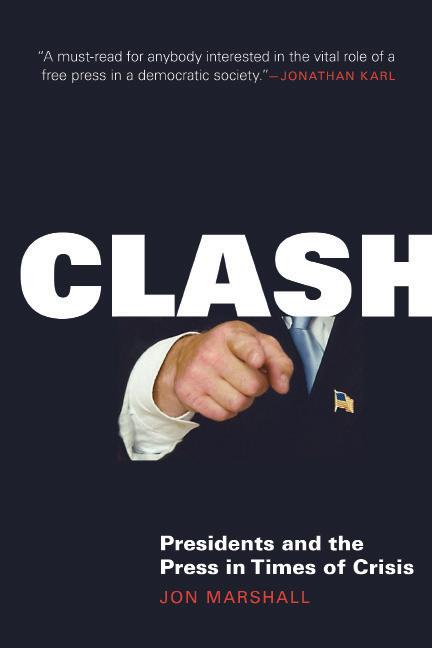
Jon Marshall is an associate professor at the Medill School of Journalism, Media, Integrated Marketing Communications at Northwestern University. He is the author of Watergate’s Legacy and the Press: e Investigative Impulse. His work has appeared in the New York Times, eAtlantic.com, WashingtonPost.com, Christian Science Monitor, CBS News’ Public Eye, Chicago Tribune, Hu ngton Post, and other venues.
MAY 448 pp. • 6 x 9 • Index $36.95T • hardcover • 978-1-64012-385-4 $47.00 Canadian Sales in U.S., dependencies, Canada, and Mexico only
Clash
Presidents and the Press in Times of Crisis
JON MARSHALL
Donald Trump’s presidency was marked by angry attacks on journalists, an extraordinary ability to capture the media spotlight, a ood of disinformation from the White House, and bitter partisanship re ected in the media. Trump’s dysfunctional relationship with the press a ected how the United States dealt with the crises of COVID-19, climate change, social unrest due to systemic racism, and e orts to overturn the 2020 election. But Trump’s troubled relationship with the press didn’t happen by chance.
Clash explores the political, economic, social, and technological forces that have shaped the relationship between U.S. presidents and the press during times of crisis. In addition to Trump’s presidency, Clash examines those of John Adams, Abraham Lincoln, Woodrow Wilson, Franklin Roosevelt, Richard Nixon, Ronald Reagan, Bill Clinton, George W. Bush, and Barack Obama. Some of these presidents faced military or international crises. Others were challenged by economic downturns or political scandals. And sometimes the survival of America’s system of government was at stake. By examining what happened between presidents and the press during these pivotal times, Clash helps us understand how we arrived at our current troubled state of a airs. It concludes with recommendations for strengthening the role the press plays in keeping presidents accountable.
“From Adams to Trump, from Lincoln to Obama, American presidents have had a symbiotic and adversarial relationship with the press. Jon Marshall’s carefully researched book takes us inside the hard-nosed reporting, the confrontations, calculations, and prevarications, to paint a picture of the often troubled connection between two of the most powerful forces in our country, our commander in chief and the sprawling news media, in moments of high tension. The result is a clearer understanding of this high-stakes, complex relationship that has consequences for every American.”—Judy Woodru , anchor and managing editor of PBS NewsHour
“Jon Marshall o ers a compelling tutorial on the often tortured relationship between American presidents and the reporters who cover them. Clash is a must-read for anybody interested in the vital role of a free press in a democratic society.”—Jonathan Karl, chief Washington correspondent of ABC News and former president of the White House Correspondents’ Association
“Donald Trump didn’t start this war. In Clash Jon Marshall skillfully traces a fraught relationship from the republic’s earliest days. But his sobering message in this deeply reported book is that the financial strain and fragmentation of the news media and Trump’s willingness to embrace and repeat lies have presented an unprecedented challenge to journalists and democracy.”—Susan Page, Washington Bureau chief of USA Today and author of Madam Speaker: Nancy Pelosi and the Lessons of Power
ALSO OF INTEREST
“Look” How a Highly Influential Magazine Helped Define Mid-Twentieth-Century America Andrew L. Yarrow $39.95 • hardcover • 978-1-61234-944-2
WORLD & NATIONAL AFFAIRS / POLITICAL SCIENCE / AMERICAN HISTORY Quest for the Presidency
e Storied and Surprising History of Presidential Campaigns in America
BOB RIEL
Quest for the Presidency gathers in a single volume the compelling stories behind every presidential campaign in American history, from 1789 through 2020. Bob Riel takes us inside the 1800 clash between omas Je erson and John Adams, the 1860 election that launched a Civil War, the 1948 whistle-stop comeback of Harry Truman, the Kennedy-Nixon drama of 1960, the 1980 Reagan Revolution, the historic 2008 election of Barack Obama, the turbulent 2020 battle between Joe Biden and Donald Trump, and everything in between. is engaging and insightful book includes a trove of entertaining stories about campaigns and candidates, and it goes beyond the campaign tales to also consider the threads that link elections across time. It sheds light on the continually evolving story of American democracy in a way that helps us to better understand present-day politics.
“Every presidential campaign is a story. This book tells each of the fifty-nine stories with superb narrative skill. It captures the passion and excitement of each campaign and weaves them together into one big story: the regular testing of the viability of American democracy.”—Bill Schneider, former CNN senior political analyst and professor emeritus at the Schar School of Policy and Government at George Mason University
“How did we get into the (disputed by some) 2020 election mess? Bob Riel reveals its toxic roots by guiding us through past presidential contests, pointing out messes, mischief, malfeasance, and near-misses—and the remarkable resilience of democracy in the United States.”—Mark Stein, author of The Presidential Fringe and How the States Got Their Shapes
“In this striking book, Bob Riel surveys the whole panorama of American history through the lens of its presidential campaigns. These quadrennial contests have been called the only times the nation really comes together to talk to itself, and Riel shows us just how colorful, dysfunctional, jangling, and entertaining those conversations have always been. Even the experts will learn something they didn’t know from the well-chosen details within—memorable and revealing snippets from our grand national heart-to-heart with each other.”—Tom Zoellner, author of Island on Fire, winner of the 2020 National Book Critics Circle Award for nonfiction Bob Riel is an author and freelance journalist who has written about history, politics, and travel for a variety of publications. He earned a master’s degree in political science from Boston College, with a focus on the history of American presidential elections.








APRIL 416 pp. • 6 x 9 • Index $36.95T • hardcover • 978-1-64012-230-7 $47.00 Canadian / £27.99 UK
ALSO OF INTEREST
e Presidential Fringe
Questing and Jesting for the Oval Office Mark Stein $29.95 • hardcover • 978-1-64012-032-7







John Spencer is the chair of Urban Warfare Studies with the Modern War Institute, United States Military Academy. He served twenty- ve years in the U.S. Army as an infantry soldier and is a highly decorated combat veteran. Spencer is the host of the Urban Warfare Project podcast, in which he interviews fellow industry experts.
JULY 272 pp. • 6 x 9 $24.95T • paperback • 978-1-64012-512-4 $31.50 Canadian / £18.99 UK
ALSO OF INTEREST
e Mysteries of Haditha
A Memoir M. C. Armstrong $27.95 • hardcover • 978-1-64012-302-1
Connected Soldiers
Life, Leadership, and Social Connections in Modern War
JOHN SPENCER
John Spencer was a new second lieutenant in 2003 when he parachuted into Iraq leading a platoon of infantry soldiers into battle. During that combat tour, he learned how important unit cohesion was to surviving a war, both physically and mentally. He observed that this cohesion developed as the soldiers experienced the horrors of combat as a group, spending their downtime together and processing their shared experiences.
When Spencer returned to Iraq ve years later to take command of a troubled company, he found that his lessons on how to build unit cohesion were no longer as applicable. Rather than bonding and processing trauma as a group, soldiers now spent their downtime separately, on computers communicating with family back home. Spencer came to see the internet as a threat to unit cohesion, but when he returned home and his wife was deployed, the internet connected him and his children to his wife on a daily basis.
In Connected Soldiers Spencer delivers lessons learned about e ective methods for building teams in a way that overcomes the distractions of home and the outside world, without reducing the bene ts gained from connections to family.
“A wonderfully stimulating, thoughtful, and thought-provoking examination of how the increase in connectivity between those on the frontlines and those on the home front a ects the allimportant bonds between our soldiers carrying out tough missions overseas.”—Gen. David Petraeus, U.S. Army (Ret.), former commander of the surge in Iraq, U.S. Central Command, and Coalition Forces in Afghanistan
“An original and invaluable book on modern war, as well as a frank and unflinchingly honest portrait of leadership and family life in the current military.”—Phil Klay, National Book Award–winning author of Redeployment and Missionaries
“John Spencer’s story is valuable for leaders in military organizations and beyond. Connected Soldiers provides unique insight into the experiences of a military family in which both parents served their nation, one another, and their fellow soldiers.” —Lt. Gen. H. R. McMaster, U.S. Army (Ret.), former national security advisor
MILITARY HISTORY / MEMOIR / IRAQ / LGBTQ STUDIES / WOMEN, GENDER & SEXUALITY Cartography
Navigating a Year in Iraq
KATHERINE SCHIFANI
Cartography describes Katherine Schifani’s time deployed in Iraq as a counterterrorism advisor with U.S. Special Forces in 2011. It is the story of one woman mapping the terra incognita of Iraq with questionable interpreters, nonexistent guidance, and an unclear purpose. It’s the story of a gay woman serving under the military’s Don’t Ask, Don’t Tell policy who realizes that the policy repeal she has long awaited is so overshadowed by a hostile environment that remaining closeted is more critical than ever.
At the heart of Cartography is Schifani’s quest to understand the Iraqi landscape and the Special Forces culture of American men she worked alongside as a gay woman and a member of the air force. Her memoir examines both the perils of being undertrained and underequipped to perform the job assigned to her in her role as an advisor and some of the unique situations—good and bad—her gender created in such an irregular combat environment. Schifani’s deployment was an exercise in exploration, observation, and navigating a wholly foreign land.








“Cartography is, in a word, brilliant. Every war, I suspect, creates its own forms of lunacy, and Katherine Schifani’s searing, surreal, and at times hilarious memoir is the definitive guide to the multivalent insanities of the American war in Iraq. If you want to know what happens when countries lose their minds, read this superb book.” —Ben Fountain, author of Billy Lynn’s Long Halftime Walk
“Schifani’s powerful, evocative prose captures the violence, danger, and absurdity of military service and the mountains women must climb to ensure their safety and equality while they make the greatest sacrifice. . . . It’s a must-read for anyone trying to figure out the meaning of America’s forever wars.”—Anthony Swo ord, author of Jarhead: A Marine’s Chronicle of the Gulf War and Other Battles Katherine Schifani is a fourteen-year air force veteran and currently serves on the Air Force Reserve Command. She was deployed in 2011 with the army to Iraq, where, at twenty- ve years old, she became the o cer in charge and the head logistics advisor for the Iraqi Counter Terrorism Service and Iraqi Special Operations Forces.
JUNE 192 pp. • 6 x 9 $19.95T • paperback • 978-1-64012-450-9 $25.50 Canadian / £14.99 UK
ALSO OF INTEREST
Quagmire
Personal Stories from Iraq and Afghanistan Edited by Donald Anderson Foreword by Philip Beidler $22.95 • paperback • 978-1-64012-452-3
MEMOIR / WOMEN, GENDER & SEXUALITY / PREGNANCY / MOTHERHOOD / MARRIAGE / GRIEF / RELIGION Knocked Down
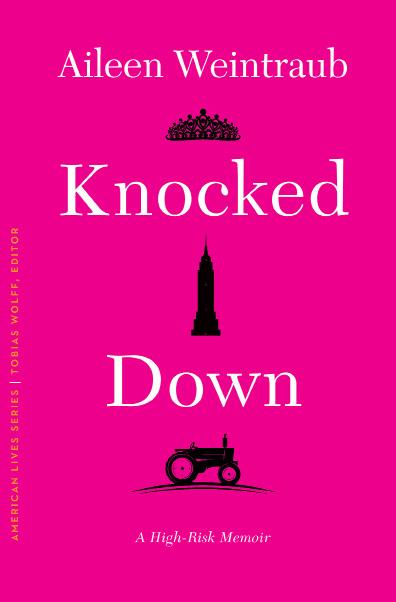
A High-Risk Memoir
AILEEN WEINTRAUB
Aileen Weintraub has been running away from commitment her entire life, hopping from one job and one relationship to the next. When her father suddenly dies, she ees her Jewish Brooklyn community for the wilds of the country, where she unexpectedly falls in love with a man who knows a lot about produce, tractors, and how to take a person down in one jiu-jitsu move. Within months of saying “I do” she’s pregnant, life is on track, and then wham! Her doctor slaps a high-risk label on her uterus and sends her to bed for ve months.
As her husband’s bucolic (and possibly haunted farmhouse begins to collapse and her marriage starts to do the same, Weintraub nally confronts her grief for her father while ghting for the survival of her unborn baby. In her precarious situation, will she stay or will she once again run away from it all?
Knocked Down is an emotionally charged, laugh-out-loud roller-coaster ride of survival and growth. It is a story about marriage, motherhood, and the risks we take.
Aileen Weintraub is an award-winning author, journalist, and editor. She has written for the Washington Post, Glamour, NBC, and AARP, among others. She has also published several children’s books, including Never Too Young! 50 Unstoppable Kids Who Made a Di erence and We Got Game! 35 Female Athletes Who Changed the World.
MARCH 298 pp. • 5 ½ x 8 ½ $22.95T • paperback • 978-1-4962-3020-1 $29.00 Canadian / £17.99 UK
American Lives Tobias Wol , series editor
“Aileen Weintraub has written a profoundly honest memoir that is sometimes painful but always loving, as she walks us through her journey from Brooklyn childhood to rural living. Heartfelt and often humorous Jewish culture meets rural farming culture, all coming together in the glorious Hudson Valley. It took us back to the best moment of our lives—the beginning of making a family.” —Mandy Patinkin and Kathryn Grody
“This memoir of an almost inconceivably di cult pregnancy (pun intended) involves multiple dichotomies: urban/rural, male/ female, Jew/non-Jew, life/death. Weintraub handles these oppositions with the deft, stunning, and mesmerizing touch of a writer who knows when to weep and when to laugh, when to hold on and when to let go. Whatever the opposite is of ‘elegy,’ this is it.” —Sue William Silverman, author of How to Survive Death and Other Inconveniences
ALSO OF INTEREST
How to Survive Death and Other Inconveniences
Sue William Silverman $19.95 • paperback • 978-1-4962-1409-6
“A gripping blend of humor and poignancy. . . . Weintraub’s keen eye for detail and breathless storytelling make this sharply observed memoir impossible to put down.”—Sari Botton, author of And You May Find Yourself: Confessions of a Late-Blooming Gen X Weirdo
Let Me Count the Ways
A Memoir
TOMÁS Q. MORÍN
Growing up in a small town in South Texas in the eighties and nineties, poverty, machismo, and drug addiction were everywhere for Tomás Q. Morín. He was around four or ve years old when he rst remembers his father cooking heroin, and he recalls many times he and his mother accompanied his father while he was on the hunt for more, Morín in the back seat keeping an eye out for unmarked cop cars, just as his father taught him. It was on one of these drives that, for the rst time, he blinked in a way that evolution hadn’t intended.
Let Me Count the Ways is the memoir of a journey into obsessive-compulsive disorder, a mechanism to survive a childhood lled with pain, violence, and unpredictability. Morín’s compulsions were a way to hold onto his love for his family in uncertain times until OCD became a prison he struggled for decades to escape. Tender, un inching, and even funny, this vivid portrait of South Texas life challenges our ideas about fatherhood, drug abuse, and mental illness.
“In this fearsome, beautiful memoir, Tomás Q. Morín takes us on ‘a journey exploring the limits of su ering and love.’ Those are the words he uses to praise a fellow poet, but the story of his upbringing is just such a wild trip. The young Tomás constantly searches for the right words to say to his beloveds, his abusers. And in Let Me Count the Ways, every episode is a prose poem.”—Maxine Hong Kingston, author of China Men and The Woman Warrior
“Let Me Count the Ways is an origin poem wrapped in a travel essay, rocking the full wings of fiction. This means it is a memoir, a stunning memoir about the worn glory of counting up, counting down, and counting in. It is simply the layered work of a soulful magician welcoming us behind our own curtains. Genius.”—Kiese Laymon, author of Heavy: An American Memoir Tomás Q. Morín is on the faculty at Rice University and Vermont College of Fine Arts. He is the author of the poetry collections Machete, Patient Zero, and A Larger Country. He is the coeditor with Mari L’Esperance of the anthology Coming Close: Forty Essays on Philip Levine. His work has appeared in the New York Times, the Nation, Slate, Poetry, reepenny Review, and Narrative.
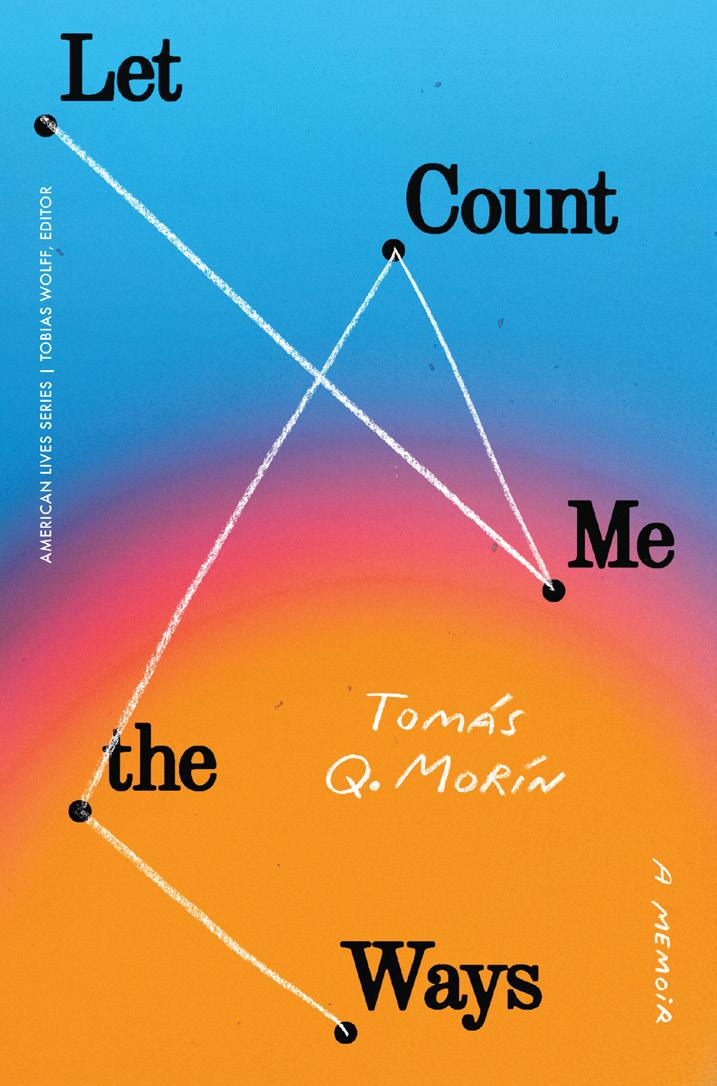
MARCH 200 pp. • 5 ½ x 8 ½ $19.95T • paperback • 978-1-4962-2649-5 $25.50 Canadian Sales in U.S., dependencies, and Canada only
American Lives Tobias Wol , series editor
ALSO OF INTEREST
Meander Belt
Family, Loss, and Coming of Age in the Working-Class South M. Randal O'Wain $19.95 • paperback • 978-1-4962-1331-0
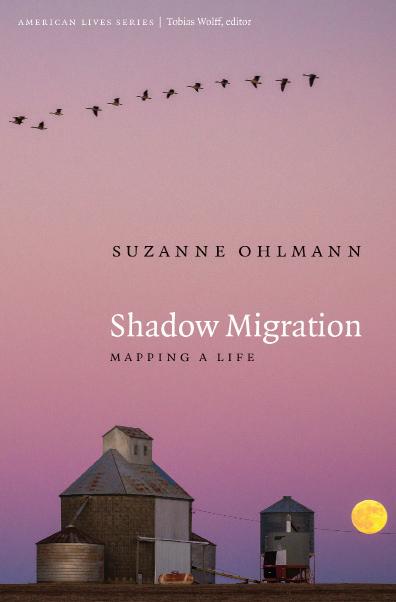
Suzanne Ohlmann is a registered nurse. A native Nebraskan, she currently lives in San Antonio with her husband and a quintet of dogs and cats. Her work has been published by the Associated Press, Intima: A Journal of Narrative Medicine, Longreads, and Texas Monthly.
MARCH 208 pp. • 5 ½ x 8 ½ • 1 illustration $21.95T • paperback • 978-1-4962-2686-0 $28.00 Canadian / £16.99 UK
American Lives Tobias Wol , series editor
ALSO OF INTEREST
Sky Songs
Meditations on Loving a Broken World Jennifer Sinor $19.95 • paperback • 978-1-4962-2264-0
Shadow Migration
Mapping a Life
SUZANNE OHLMANN
With her feet rmly rooted on the plains of Nebraska, Suzanne Ohlmann launches the reader into ight over miles and decades of migration: from an apple-pie childhood in America’s Fourth of July City to the dirt oors of a cowshed in rural India, we zigzag across time and geography to see the world through Ohlmann’s eyes and to discover with her the pain she’d been avoiding through her boomerang travels away from her native home. rough incarnations as a musician, arts manager, and registered nurse, Ohlmann nally lands in Texas, buys a house, and gets a dog. But her house is haunted, and so is she. In the dark solitude of Ohlmann’s basement the vision of a dead child presents her with a harrowing choice: she can go home to Nebraska and seek the truth of her biological past, or, like the boy, surrender to the depths of her own darkness. With honesty, compassion, and a sense of humor, Ohlmann recounts her tenacious search into the shadows of her life.
“Ohlmann reveals herself to be a brave soul who reaches for the light while never turning from the dark. Her story sparkles with such insight and honesty, gutsy humor and restrained (midwestern) bravado, I felt bereft when I had to turn the last page and leave her.”—Beverly Donofrio, author of Riding in Cars with Boys and Astonished
“I was moved and awed by Ohlmann’s honesty about the deep pain surrounding her adoption, her ability to take me from a choral performance (that goes gastrically awry) to her mother’s table—which you better be at by 5:30—to Nebraska’s multitudinous sandhill cranes (those cranes!). Although we couldn’t be much more di erent on paper, I couldn’t have related more.”—Patricia Resnick, screenwriter of 9 to 5, Straight Talk, and Better Things
“What’s unique about Suzanne Ohlmann’s Shadow Migration is the way in which she brings the many layers of her identity into the urgent search for her source. Ohlmann is an adoptee searching for a birthday do-over with migrating cranes, but she is also a musician and a nurse, a lover and a wife, a Nebraskan and a world traveler, a woman su ering from depression and a really good friend. I’d follow her anywhere.”—Jill Christman, author of Darkroom: A Family Exposure
e Great Indoorsman
Essays
ANDREW FARKAS
Many authors have traveled and explored the out-of-doors, both in life and then in their books, proving themselves stalwart, audacious, even heroic; Andrew Farkas is not among them. He is brave enough to admit that the outdoors isn’t for him. Instead, in these essays Farkas reports on his bold explorations of a very di erent territory: the in-of-doors, the waiting rooms, kitchens, malls, bars, theaters, roadside motel rooms, and other places that feature temperature control, protection from rampaging predators, and a higher degree of comfort than can be found outside.
Farkas discovers that, just as the mannered and wonderfully (gloriously) arti cial indoors in uences us greatly, our lives are also controlled much more by ction than by anything “real.” So come in out of the weather (it’s always terrible) and join the Great Indoorsman on his adventures, where he makes fun of pretty much everything, most of all himself.
“Absurdist and absurdly amusing, Andrew Farkas takes readers on a sublime tour through dive bars and co eehouses, dilapidated movie theaters and dying malls. A doctor of knowledge, erudite but humble, Farkas creates an enchanting yet down-to-earth collection perfect for indoors, outdoors, or anywhere in between.”—Kathleen Rooney, author of Cher Ami and Major Whittlesey
“Andrew Farkas, the master renovator in these crafted and crafty essays, is the ultimate interior decorator of all things turned inside out. Here the reflections reflect infinite rooms where we are, at once, lost and found, found and lost within hallways of infinite with-inings.”—Michael Martone, editor of The Complete Writings of Art Smith, the Bird Boy of Fort Wayne
“Throughout this deliriously inventive collection, Andrew Farkas operates like a 1930s Rube Goldberg cartoon jalopy, nimbly galumphing through mundane worlds—a waiting room, a hamburger joint, Tuscaloosa. The elevated performance is grounded by a sincere, persistent question: Where is home?”—David Gi els, author of Barnstorming Ohio: To Understand America Andrew Farkas is an assistant professor of English at Washburn University. He is the author of e Big Red Herring, Sunsphere, and Self-Titled Debut.

MARCH 188 pp. • 6 x 9 $19.95T • paperback • 978-1-4962-3051-5 $25.50 Canadian / £14.99 UK
ALSO OF INTEREST
To Hell with It
Of Sin and Sex, Chicken Wings, and Dante’s Entirely Ridiculous, Needlessly Guilt-Inducing Inferno Dinty W. Moore $19.95 • paperback • 978-1-4962-2460-6
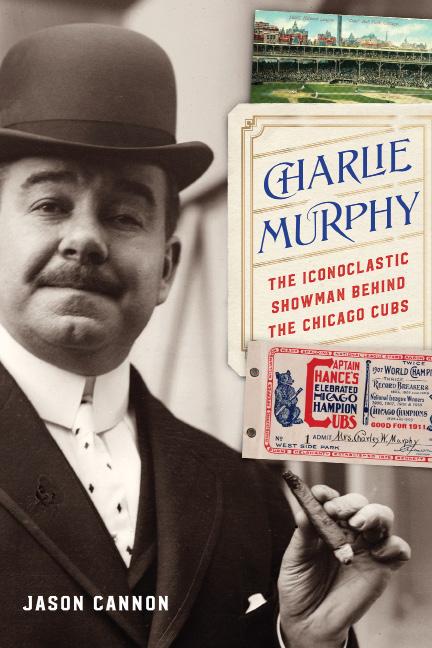
Jason Cannon worked in collegiate sports information before turning to teaching and writing. His articles have appeared in NINE: A Journal of Baseball History and Culture.
JUNE 400 pp. • 6 x 9 • 14 photographs, index $36.95T • hardcover • 978-1-4962-2863-5 $47.00 Canadian / £27.99 UK
ALSO OF INTEREST
e Called Shot
Babe Ruth, the Chicago Cubs, and the Unforgettable Major League Baseball Season of 1932 Thomas Wolf $36.95 • hardcover • 978-0-8032-5524-1
Charlie Murphy
e Iconoclastic Showman behind the Chicago Cubs
JASON CANNON
You don’t know the history of the Chicago Cubs until you know the story of Charles Webb Murphy, the ebullient and mercurial owner of this historic franchise from 1905 through 1914. Originally a sportswriter in Cincinnati, he joined the New York Giants front o ce as a press agent— the game’s rst—in 1905. at season, hearing the Cubs were for sale, he secured a loan from Charles Taft, the older half-brother of the future president of the United States, to buy a majority share and become the team’s new owner. In his second season, the Cubs won a record 116 games and their rst World Series. ey won again in 1907, but soon thereafter Murphy’s unconventional style invited ill will from the owners, his own players, and the press, even while leading the team through their most successful period in team history.
In Charlie Murphy: e Iconoclastic Showman behind the Chicago Cubs, Jason Cannon explores Murphy’s life both on and o the eld, painting a picture of his meteoric rise and precipitous downfall. Readers will get to know the real Murphy, not the simpli ed caricature created by his contemporaries that has too frequently been perpetuated through the years, but the whirling dervish who sent the sport of baseball spinning and elevated Chicago to the center of the baseball universe.
Cannon recounts Murphy’s rise from the son of Irish immigrants to sports reporter to Cubs president, charting his legacy as one of the most important but overlooked gures in the National League’s long history. Cannon explores how Murphy’s di cult teenage years shaped his love for baseball; his relationship with the Tafts, one of America’s early twentieth-century dynastic families; his successful and tumultuous years as a National League executive; his last years as an owner before the National League Board of Directors ousted him in 1914; and, nally, Murphy’s attempt to rewrite his legacy through the construction of the Murphy eater in his hometown of Wilmington, Ohio.
“Over the first couple of decades of the twentieth century, Cubs owner and general manager Charles Murphy was as significant as any executive in baseball and one of its most interesting characters. Jason Cannon perceptively unwraps the man who oversaw Cubs championship seasons and was a principal actor in some of the era’s most notable controversies and boardroom battles.”—Daniel R. Levitt, coauthor of In Pursuit of Pennants: Baseball Operations from Deadball to “Moneyball”
“Impeccably researched and masterfully written, Charlie Murphy tells the story of one of baseball’s most well-known, forgotten owners. Only after you’ve read it do you realize how much you didn’t know of Murphy and his impact on the game.”—Willie Steele, editor of NINE: A Journal of Baseball History and Culture
Le y and Tim
How Steve Carlton and Tim McCarver Became Baseball’s Best Battery
WILLIAM C. KASHATUS FOREWORD BY LARRY CHRISTENSON
Lefty and Tim is the dual biography of Hall of Fame pitcher Steve “Lefty” Carlton and catcher Tim McCarver, detailing their relationship from 1965, when they played with the St. Louis Cardinals, through 1980, when they played for the Philadelphia Phillies. Along the way McCarver became Carlton’s personal catcher, and together they became the best battery in baseball in the mid-to-late 1970s.
At rst glance Carlton and McCarver appear like an odd couple: McCarver was old school, Carlton new age. At the beginning of his career, McCarver believed that the catcher called the pitches, encouraged the pitcher when necessary, and schooled the pitcher when he deviated from the game plan. But Lefty, who pioneered the use of meditation and martial arts in baseball, was stubborn too. He wanted to control pitch selection. Over time, Carlton and McCarver developed a strong bond o the diamond that allowed them to understand and trust each other. In the process, Steve Carlton became one of the greatest left-handers in the history of Major League Baseball, an achievement that would not have been possible without Tim McCarver as his catcher. Not only did McCarver mentor Carlton as a young hurler with the Cardinals, but he helped resurrect Carlton’s career when they were reunited in Philadelphia midseason in 1975. Carlton won his second Cy Young Award with McCarver behind the plate in 1977.
Told in the historical context of the time they played the game, Lefty and Tim recounts the pair’s time in the tumultuous sixties, with the racial integration of the St. Louis Cardinals and the dominance of pitching, and in the turbulent seventies, characterized by MLB’s labor tensions, the arrival of free agency, and the return of the lively ball that followed the lowering of the pitcher’s mound in 1969.
“Steve Carlton needed Tim McCarver to reach for the stars. In all my years covering baseball, I’ve never seen a pitcher-catcher relationship quite like theirs. McCarver did more than merely help Carlton rediscover his slider and recapture his greatness. He found a place inside Carlton’s circle of trust that reshaped both of their careers. Kashatus does a beautiful job of delving into what made their bond so special, on and o the field.”—Jayson Stark, baseball writer for the Athletic and the Philadelphia Inquirer, 1979–2000, and 2019 J. G. Taylor Spink Award winner
“Bill Kashatus takes an inside look at a historic baseball brotherhood, revealing in riveting detail how Tim McCarver helped push a pitcher he claimed had an ‘irascible contempt for being human’ to superhuman heights no pitcher may ever reach again.”—Tyler Kepner, author of K: A History of Baseball in Ten Pitches William C. Kashatus is a historian, educator, and the author of more than twenty books, including Macho Row: e 1993 Phillies and Baseball’s Unwritten Code (Nebraska, 2017) and Jackie and Campy: e Untold Story of eir Rocky Relationship and the Breaking of Baseball’s Color Line (Nebraska, 2014). Larry Christenson is a former professional baseball player who pitched for the Philadelphia Phillies between 1973 and 1983.








JUNE 384 pp. • 6 x 9 • 22 photographs, 2 illustrations, 3 appendixes, index $34.95T • hardcover • 978-1-4962-2667-9 $44.00 Canadian / £26.99 UK
ALSO OF INTEREST
Macho Row
The 1993 Phillies and Baseball’s Unwritten Code William C. Kashatus $21.95 • paperback • 978-1-4962-1408-9
Peter Dreier and Robert Elias BASEBALL REBELS
The Players, People, and Social Movements That Shook Up the Game and Changed America
Foreword by Dave Zirin
Peter Dreier is E. P. Clapp Distinguished Professor of Politics and founding chair of the Urban and Environmental Policy Department at Occidental College. A former newspaper reporter, community organizer, and senior policy adviser to former Boston mayor Ray Flynn, he has authored or coauthored seven books, including e 100 Greatest Americans of the 20th Century: A Social Justice Hall of Fame. Robert Elias is a professor of politics and legal studies at the University of San Francisco. He is the author of several books, including Baseball and the American Dream: Race, Class, Gender, and the National Pastime. Dave Zirin is the author of several books, the sports editor for e Nation, and host of the weekly Edge of Sports podcast and radio show.
APRIL 440 pp. • 6 x 9 • 36 illustrations, index $36.95T • hardcover • 978-1-4962-1777-6 $47.00 Canadian / £27.99 UK
Baseball Rebels
PETER DREIER AND ROBERT ELIAS FOREWORD BY DAVE ZIRIN
In Baseball Rebels Peter Dreier and Robert Elias examine the key social challenges—racism, sexism, and homophobia—that shaped society and worked their way into baseball’s culture, economics, and politics.
Since baseball emerged in the mid-1800s to become America’s pastime, the nation’s battles over race, gender, and sexuality have been re ected on the playing eld, in the executive suites, in the press box, and in the community. Some of baseball’s rebels are widely recognized, but most of them are either little known or known primarily for their baseball achievements—not their political views and activism. Everyone knows the story of Jackie Robinson breaking baseball’s color line, but less known is Sam Nahem, who opposed the racial divide in the U.S. military and organized an integrated military team that won a championship in 1945. Or Toni Stone, the rst of three women who played for the Indianapolis Clowns in the previously all-male Negro Leagues. Or Dave Pallone, MLB’s rst gay umpire. Many players, owners, reporters, and other activists challenged both the baseball establishment and society’s status quo.
Baseball Rebels tells stories of baseball’s reformers and radicals who were in uenced by, and in turn in uenced, America’s broader political and social protest movements, making the game—and society—better along the way.
“Baseball is America’s game: it’s a game with an important and often over-looked history of rebellion, and one that, with fits and starts, has helped lead the nation’s fight against racism, sexism, and homophobia. Don’t believe me? This incisive and compelling book proves it. . . . Highly recommended.”—Jonathan Eig, author of Luckiest Man and Opening Day
“It’s not just that Baseball Rebels homes in on the heroes (and reprobates) in the ongoing battles for civil rights and against gender discrimination. It’s that it does it with grace and humanity, telling must-read stories of barrier-breakers we know, like Satchel Paige, and others we ought to, like Frank Sykes.”—Larry Tye, author of Satchel: The Life and Times of an American Legend
“Baseball began in the cities, from a nostalgic longing for an agrarian paradise more ideal than real. That idealism—a wish for fairness and harmony on a level playing field—animated all that came after and is splendidly delineated in Robert Elias and Peter Dreier’s new book. Who is in, who is out, and who gets to decide: that has been the banner under which all baseball’s rebels have marched.” —John Thorn, o cial historian of Major League Baseball
ALSO OF INTEREST
Baseball’s Power Shift
How the Players Union, the Fans, and the Media Changed American Sports Culture Krister Swanson $29.95 • hardcover • 978-0-8032-5523-4
Stumbling around the Bases
e American League’s Mismanagement in the Expansion Eras
ANDY MCCUE
From the late 1950s to the 1980s, baseball’s American League mismanaged integration and expansion, allowing the National League to forge ahead in attendance and prestige. While both leagues had executive structures that presented few barriers to individual team owners acting purely in their own interests, it was the American League that succumbed to in ghting—which ultimately led to its disappearance into what we now call Major League Baseball. Stumbling around the Bases is the story of how the American League fell into such a disastrous state, struggling for decades to escape its nadir, and, when it nally righted itself, lost its independence. e American League’s trip to the bottom involved bad decisions by both individual teams and their owners. e key elements were a glacial approach to integration, the choice of under nanced or disruptive new owners, and a consistent inability to choose the better markets among those cities available for expansion. e American League wound up with less attractive teams in the smaller markets compared to the National League—and thus fewer consumers of tickets, parking, beer, hotdogs, scorecards, and replica jerseys. e errors of the American League owners were rooted in missed cultural and demographic shifts and exacerbated by reactive decisions that hurt as much as helped their interests. ough the owners were men who were notably successful in their non-baseball business ventures, success in insurance, food processing, real estate development, and pizza didn’t necessarily translate into running a ourishing baseball league. In the end the National League was simply better at recognizing its collective interests, screening its owners, and recognizing the markets with long-term potential.
“As integration and expansion pushed baseball into the modern era, it’s a wonder the bumbling American League owners could even open their gates. With comprehensive research and a clean, crisp style, Andy McCue chronicles all the behind-the-scenes stumbling and scheming that was just as fascinating as the play on the field.” —Tyler Kepner, New York Times national baseball columnist and author of K: A History of Baseball in Ten Pitches Andy McCue is the author of Mover and Shaker: Walter O’Malley, the Dodgers, and Baseball’s Westward Expansion (Nebraska, 2014), winner of the Seymour Medal from the Society for American Baseball Research, and Baseball by the Books: e Complete History and Bibliography of Baseball Fiction.








APRIL 232 pp. • 6 x 9 • 4 charts, index $29.95T • hardcover • 978-1-4962-0703-6 $38.00 Canadian / £22.99 UK
ALSO OF INTEREST
In Pursuit of Pennants
Baseball Operations from Deadball to Moneyball Mark L. Armour and Daniel R. Levitt $26.95 • paperback • 978-1-4962-0601-5
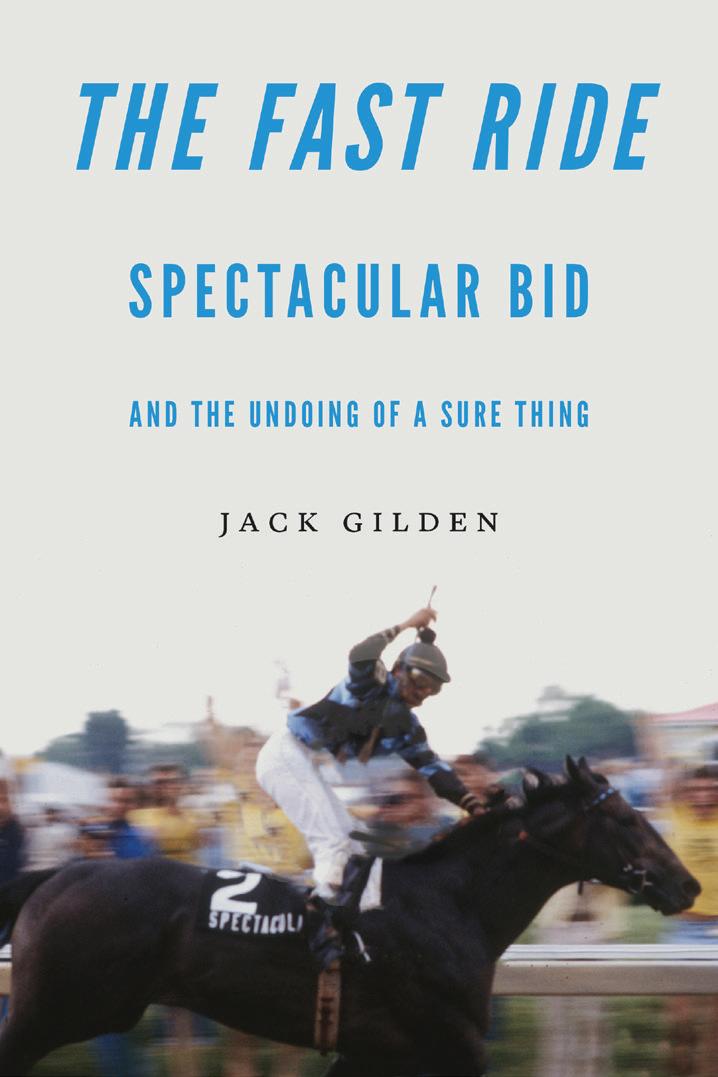
Jack Gilden is a past winner of the Simon Rockower journalism award. He is the author of Collision of Wills: Johnny Unitas, Don Shula, and the Rise of the Modern NFL (Nebraska, 2018). He also consults for businesses about their messaging and teaches journalism and composition at the college level.
APRIL 360 pp. • 6 x 9 • Index $34.95T • hardcover • 978-1-4962-3050-8 $44.00 Canadian Sales in U.S. and Canada only
ALSO OF INTEREST
Come on Seabiscuit!
Ralph Moody Illustrated by Robert Riger $14.95 • paperback • 978-0-8032-8287-2
e Fast Ride
Spectacular Bid and the Undoing of a Sure ing
JACK GILDEN
In an era of spectacular thoroughbreds, Spectacular Bid was perhaps the most exalted racehorse of them all. In 1979 he won the Kentucky Derby and the Preakness Stakes—and transcended his sport on a run of twelve consecutive stakes victories—but his quest for the Triple Crown was lost with a third-place nish in the Belmont Stakes due to a series of bizarre events that have never been accurately reported.
In e Fast Ride, Jack Gilden tells the story of what really happened that day the Bid lost the biggest race of his life. Along the way, he introduces the reader to a cast of characters from the gilded age of late twentieth-century horse racing, from Bid’s owners, the renowned Meyerho family, to Grover “Buddy” Delp, the fast-talking trainer, to teenage jockey Ronnie Franklin, whose meteoric rise to fame aboard Spectacular Bid came at the cost of his innocence and well-being. Also present are four of the era’s magni cent Latino riders, Ángel Cordero Jr., Jacinto Vasquez, Georgie Velasquez, and Ruben Hernandez, who all felt the sting of rejection and bigotry during their long careers even as they found their way and raised the level of competition to a feverish pitch.
Underlying Spectacular Bid’s saga was a thin line between hard work and excess, including substance abuse, animal manipulation and doping, and race xing. Hardly anyone in the horse’s circle made it out unscathed or undamaged. e Fast Ride is the story of a great racehorse, unful lled dreams, the exhilaration and steep price of striving at all costs, and an American era in which getting everything you ever wanted could be the most empty and unful lling sensation of all.
“Jack Gilden’s superb reporting turns the story of a great American racehorse into a riveting lesson about the di erence between perception and reality. Spectacular Bid and his wild cast of human connections positively pulsate with energy.”—John Eisenberg, author of The League: How Five Rivals Created the NFL and Launched a Sports Empire
“Both haunting and harrowing—Jack’s detailed account of Spectacular Bid’s unique history also serves as a fascinating snapshot of American society and its complicated obsession with the sport of kings.”—Amy Lawrence, CBS Sports Radio host
e Winning Ticket
Uncovering America’s Biggest Lottery Scam
ROB SAND WITH REID FORGRAVE
e Winning Ticket is an inside look at one of the most complicated yet seat-of-your-pants nancial crimes in recent history. Rob Sand, the youngest attorney in his o ce, was assigned a new case by his boss, who was days away from retirement. Inside the thin accordion binder Sand received was meager evidence regarding a suspicious lottery ticket gathered over the course of two years by Iowa authorities. No one expected the case to go anywhere. No dead body, no shots red, and no money paid out. Why should they care? ere was no certainty that a crime had even been committed. But a mysterious Belizean trust had attempted to claim the $16 million ticket, then decided to forgo the money and maintain anonymity when the State of Iowa demanded to know who had purchased the ticket. Who values anonymity over that much money?
Both a story of small-town America and a true-crime saga about the largest lottery-rigging scheme in American history, e Winning Ticket follows the investigation all the way down the rabbit hole to uncover how Eddie Tipton was able to cheat the system to win jackpots over $16 million and go more than a decade without being caught—until Rob Sand inherited the case.
Just as remarkable as the crime are the real-life characters met along the way: an honest reworks salesman, a hoodwinked FBI agent, a crooked Texas lawman, a shady attorney representing a Belizean trust, and, yes, Bigfoot hunters. While some of the characters are nearly unbelievable, the everyday themes of integrity and hard work resonate throughout the saga. As the case builds toward a reckoning, e Winning Ticket demonstrates how a new day has dawned in prosecuting complex technological crimes.
I believe there’s a unique moral component to white-collar prosecution. When I interviewed at the attorney general’s o ce, [my future boss] was stunned when I told him my primary interest was prosecuting white-collar crime.
“Oh, really!” he said, happily surprised. “Why’s that?”
“Well, if there’s any crime that is best deterred by a good prosecution of the same crime, it’s white-collar,” I told him. “These people aren’t drunk. They aren’t angry. They aren’t both drunk and angry. And they aren’t desperate. They are committing well-planned crimes on a continuing basis, usually using the access that they have thanks to their nice job. But not only can you reduce the amount of financial crime with appropriate consequences, it is also more o ensive to me. Like a crime against gratitude.
—from The Winning Ticket Rob Sand was elected as Iowa’s state auditor in 2018. A native of Decorah, Iowa, he previously served seven years as an Iowa assistant attorney general. Reid Forgrave is a newspaper and magazine writer who currently writes for the Star Tribune in Minneapolis. He is the author of Love, Zac: Small-Town Football and the Life and Death of an American Boy.

MAY 240 pp. • 6 x 9 $29.95T • hardcover • 978-1-64012-371-7 $38.00 Canadian Sales in North America only
ALSO OF INTEREST
Call Me Commander
A Former Intelligence Officer and the Journalists Who Uncovered His Scheme to Fleece America Jeff Testerman and Daniel M. Freed $34.95 • hardcover • 978-1-64012-304-5








Eileen Wirth is a professor emeritus of journalism at Creighton University and a senior writer for Legacy Preservation in Omaha. She is the author or coauthor of several books, including From Society Page to Front Page: Nebraska Women in Journalism (Nebraska, 2013), Omaha’s Henry Doorly Zoo and Aquarium, and A History Lover’s Guide to Omaha.
MAY 240 pp. • 6 x 9 • 19 photographs, 1 illustration, index $22.95T • paperback • 978-1-4962-2864-2 $29.00 Canadian / £17.99 UK
ALSO OF INTEREST
Black Print with a White Carnation
Mildred Brown and the “Omaha Star” Newspaper, 1938–1989 Amy Helene Forss $30.00 • paperback • 978-0-8032-4690-4
e Women Who Built Omaha
A Bold and Remarkable History
EILEEN WIRTH
During the 1930s the Federal Writers’ Project described Omaha as a “man’s town,” and histories of the city have all but ignored women. However, women have played major roles in education, health, culture, social services, and other elds since the city’s founding in 1854. In e Women Who Built Omaha Eileen Wirth tells the stories of groundbreaking women who built Omaha, including Susette “Bright Eyes” LaFlesche, who translated at the trial of Chief Standing Bear; Mildred Brown, an African American newspaper publisher; Sarah Joslyn, who personally paid for Joslyn Art Museum; Mrs. B of Nebraska Furniture Mart; and the Sisters of Mercy, who started Omaha’s Catholic schools. Omaha women have been champion athletes and su ragists as well as madams and bootleggers. ey transformed the city’s parks, co-founded Creighton University, helped run Boys Town, and so much more, in ways that continue today.
“Eileen Wirth o ers Omahans a window into their history, a fuller accounting of the contributions of remarkable women who built this city. . . . Wirth’s extensive research and reporter’s style make this history book come alive with compelling characters and rich descriptions.”—Erin Grace, former columnist for the Omaha World-Herald
“An account of feminine accomplishment that goes well beyond the usual portraits of a few well-known society women who made their mark in the shadow of their even better-known husbands. . . . This book shares a wealth of interesting and little-known anecdotes about those women who paved the way to the Omaha of today.” —Martha Grenzeback, genealogy librarian of the Omaha Public Library
“In her no-nonsense, leave-the-flu -in-the-hall style, Eileen Wirth has presented us with a well-researched look at Omaha women. . . . If you are a native, new to Omaha and curious, or just looking for some kind of history, The Women Who Built Omaha is for you.”—Mary Maxwell, Omaha humorist
148 Charles Street
A Novel
TRACY DAUGHERTY
Tracy Daugherty’s historical novel 148 Charles Street explores the fascinating story of Willa Cather’s friendship with Elizabeth Shepley Sergeant. e women shared a passion for writing, for New York, and for the desert Southwest, but their sensibilities could not have been more di erent: Cather, the novelist of lyrical landscapes and aesthetic re nement, and Sergeant, the muckraking journalist and literary activist. eir friendship is sorely tested when Cather ctionalizes a war that Sergeant covered as a reporter, calling into question, for both women, the uses of art and journalism, the power of imagination and witness. 148 Charles Street is a testament to the bonds that endure despite disagreements and misunderstandings, and in the relentlessness of a vanishing past. 148 Charles Street explores, as only ction can, the two writers’ interior lives, and contrasts Sergeant’s literary activism with Cather’s more purely aesthetic approach to writing.
“I can think of few novelists who have written so unerringly about literary ambition, especially in women. In this quietly passionate book, Tracy Daugherty follows Willa Cather and her friend, journalist and social reformer Elsie Shepley Sergeant, through their long, ardent battle over the purpose of art, a conflict waged from the most refined salon in Boston all the way to a ruined adobe hut in New Mexico. What superb company they are, because of their di erences, and what gorgeously detailed worlds they inhabit. This is a novel with so much heart, written with such deep intelligence, that I felt wiser and more humane myself by the end of it.”—Suzanne Berne, author of A Crime in the Neighborhood and The Dogs of Littlefield Tracy Daugherty is distinguished emeritus professor of English and Creative Writing at Oregon State University. In addition to biographies of Joan Didion and Joseph Heller, he has published several novels, including High Skies, Axeman’s Jazz, e Boy Orator, Desire Provoked, and What Falls Away.
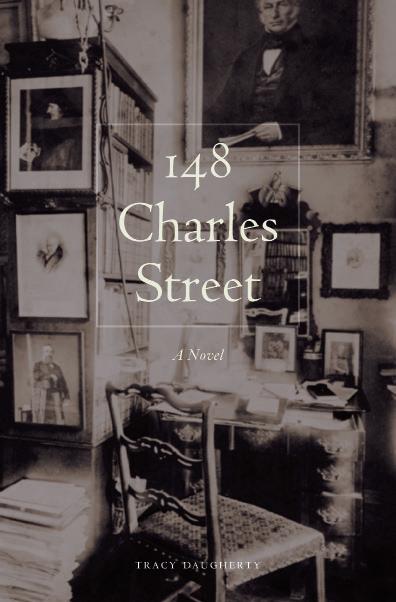
APRIL 146 pp. • 5 ½ x 8 ½ $19.95T • paperback • 978-1-4962-2974-8 $22.50 Canadian / £14.99 UK
ALSO OF INTEREST
e Song of the Lark
Willa Cather $23.95 • paperback • 978-0-8032-4572-3
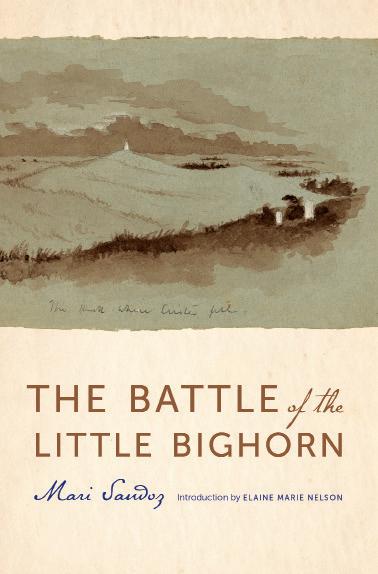
Mari Sandoz (1896–1966) is the noted author of Cheyenne Autumn, Old Jules, and Crazy Horse (all available in Bison Books editions). Elaine Marie Nelson is an assistant professor of history at the University of Kansas and executive director of the Western History Association.
MARCH 198 pp. • 5 ¼ x 8 • 1 map, index $21.95T • paperback • 978-1-4962-2911-3 $28.00 Canadian Sales in North America only No ebook available
e Battle of the Little Bighorn
MARI SANDOZ INTRODUCTION BY ELAINE MARIE NELSON
Mari Sandoz’s beautifully written account of the battle in which General George Armstrong Custer staked his life— and lost it—reveals on every page the author’s intimate knowledge of her subject. e character of the Sioux, the personality of Custer, the mixed emotions of Custer’s men, the plains landscape—all emerge with such clarity that the reader is transported to that spring in 1876, when the Army of the Plains began its fateful march toward Yellowstone. e background of the tragedy is here: the history of bad blood and broken treaties between the Indigenous nations and the United States, the underlying reason for Custer’s expedition and for the convocation of Indians on the Little Bighorn that particular year. Sandoz’s nal book was the rst analysis of Custer’s motives and political ambitions to shed light on an old mystery that was hotly disputed by the general’s admirers.
Historian Elaine Marie Nelson introduces this iconic work to a new generation and details the long, challenging road this book took to publication. Sandoz raced against time to complete the volume while undergoing cancer treatments, and the book was published just three months after her death. e Battle of the Little Bighorn is widely considered the apex of her writing.
“Sandoz has taken the theme of Custer’s last stand and given it new dimension and understanding through knowledge gained in a lifetime of research. . . . The writing is gritty and unsparing in detailing hardship and heartbreak. In this, her last book, she has written a heroic saga worthy of a place alongside Old Jules and Crazy Horse.”—Library Journal
“The book is a perfect mating of subject and author . . . and is probably the best account of the battle ever written.”—New York Times Book Review
ALSO OF INTEREST
Fort Phil Kearny
An American Saga Dee Brown Introduction by Shannon D. Smith $21.95 • paperback • 978-0-8032-3458-1
NATIVE STUDIES / PACIFIC NORTHWEST / AMERICAN HISTORY Northern Paiutes of the Malheur
High Desert Reckoning in Oregon Country
DAVID H. WILSON JR.
In 1870 a twenty-six-year-old Paiute, Sarah Winnemucca, wrote to an army o cer requesting that Paiutes be given a chance to settle and farm their ancestral land. e eloquence of her letter was such that it made its way into Harper’s Weekly. Ten years later, as her people languished in con nement as a result of the Bannock War, she convinced Secretary of the Interior Carl Schurz to grant the requests in her letter and free the Paiutes as well. Schurz’s decision unleashed furious opposition from the Bureau of Indian A airs, cattlemen, and settlers. A campaign of disinformation by government o cials followed, sweeping truth aside and falsely branding Paiute chief Egan as instigator and leader of the Indian forces. e campaign succeeded in its mission to overturn Schurz’s decision.
To this day histories of the war appear to be unanimous in their mistaken claim that Egan led his Paiutes into war. Indian agents’ betrayal of the people they were paid to protect saddled Paiutes with responsibility for a war that most opposed and that led to U.S. misappropriation of their land, their only source of life’s necessities. With neither land nor reservation, Paiutes were driven more deeply into poverty and disease than any other Natives of that era. David H. Wilson Jr. pulls back the curtain to reveal what government o cials hid—exposing the full jarring injustice and, after 140 years, recounting the Paiutes’ true and proud history for the rst time.
“In Northern Paiutes of the Malheur David Wilson captures the untold story of Chief Egan and our people, fulfilling the wish of my grandfather Hubert Egan for the true story of the Paiutes, hidden for almost a century and a half, to be revealed at last.”—Nancy Egan, direct descendant of Chief Egan and representative of the Egan family
“Wrong was done to the Paiutes—it’s as simple as that—and the passion David Wilson puts into telling their story comes through more powerfully for the restrained and careful way he tells it. This will be a book of lasting value for its contributions to the history of the West and for its simple, elegant prose, which is a Western artifact of its own. Both authoritative and exciting to read, this is an excellent piece of work.”—Ian Frazier, best-selling author of Great Plains and On the Rez and two-time winner of the Thurber Prize David H. Wilson Jr. rafted the rivers and hiked the lands of the Paiutes after moving to Oregon to practice law, specializing in employment discrimination. He also taught at the University of Wisconsin–Madison School of Law, Willamette University School of Law, and the University of Oregon School of Law. After retiring Wilson spent eight years researching and writing Northern Paiutes of the Malheur. He lives in Portland, Oregon.
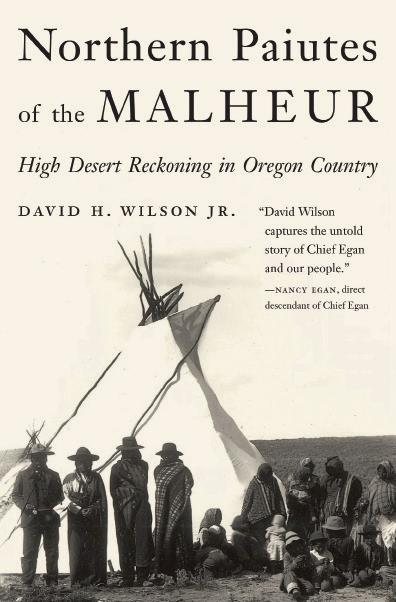
MAY 336 pp. • 6 x 9 • 17 photographs, 2 illustrations, 3 maps, index $34.95T • hardcover • 978-1-4962-3045-4 $44.00 Canadian / £26.99 UK
ALSO OF INTEREST
e Modoc War
A Story of Genocide at the Dawn of America’s Gilded Age Robert Aquinas McNally $24.95 • paperback • 978-1-4962-2491-0

Suzanne Roberts is the author of Bad Tourist: Misadventures in Love and Travel (Nebraska, 2020), Almost Somewhere: Twenty-Eight Days on the John Muir Trail (Bison Books, 2012), and four collections of poetry. Visit her website: www.suzanneroberts.net.
MARCH 252 pp. • 5 ½ x 8 ½ $19.95T • paperback • 978-1-4962-3102-4 $25.50 Canadian / £14.99 UK
ALSO OF INTEREST
Bad Tourist
Misadventures in Love and Travel Suzanne Roberts $19.95 • paperback • 978-1-4962-2284-8
Animal Bodies
On Death, Desire, and Other Di culties
SUZANNE ROBERTS
How do we reckon with our losses? In Animal Bodies Suzanne Roberts explores the link between death and desire and what it means to accept our own animal natures, the parts we most often hide, deny, or consider only with shame—our taboo desires and our grief. In landscapes as diverse as Salamanca’s cobbled streets, the Mekong River’s oating markets, Fire Island’s windswept beaches, Nashville’s honky-tonks, and the Sierra Nevada’s snowy slopes, Roberts interrogates her memory and tries to make sense of her own private losses (deaths of people and relationships), as well as more public losses, including a mass shooting in her hometown and environmental devastation in the Amazon rainforest.
With lyricism, insight, honesty, and dark humor, these essays illuminate the sometimes terrible beauty of what it means to be human, deepening the conversation on death and grief, sexuality, and the shame that comes from surviving the world in a female body with all of its complexities.
“In Animal Bodies, Suzanne Roberts o ers surprising insight, both intimate and universal, into death, desire, and how we all move through this di cult world. Her essays are ruthless, beautiful, graceful, and endlessly fascinating. A wonderful book.”—Dinty W. Moore, author of Between Panic and Desire
“Suzanne Roberts’s essays are eloquent and vibrantly imaginative. They are lyrical in the best sense: the language is rhythmic, pulsing on the page, but never poeticized, flowery, or vague. Roberts’s wisdom and humor are evident throughout. I so welcome a collection of her essays, all in one place.”—Carolyn Forché, author of What You Have Heard Is True
“No one travels the depths of place and experience more phenomenally than Suzanne Roberts. In these essays that explore being, beauty, desire, death, and our collective animal journeys on the planet, Animal Bodies gathers our questions about life and brings them to the only place where meaning might emerge: adaptation. This book is a triumph that transcends human and gives us a chance to re-story ourselves into the larger world.”—Lidia Yuknavitch, author of The Chronology of Water
Private Way
A Novel
LADETTE RANDOLPH
In 2015, when cyberbullies disrupt her life in Southern California, Vivi Marx decides to cut her cord with the internet and take her life o ine for a year. She ees to the one place where she felt safe as a child—with her grandmother in Lincoln, Nebraska. Nevermind that her grandmother is long dead and she doesn’t know anyone else in the state. Even before she meets her new neighbors on Fieldcrest Drive, Vivi knows she’s made a terrible mistake, but every plan she makes to leave is foiled. Despite her e orts to outrun it, trouble follows her to Nebraska, just not in the ways she’d feared. With the help of her neighbors, Willa Cather’s novels, and her own imagination, Vivi nds something she hadn’t known she was searching for.
“A wonderfully wise, vividly written, and deeply absorbing novel that delves into Willa Cather’s question about what is required of ‘a civilized society.’ By turns funny, reflective, and harrowing . . . Private Way is that rare novel that acknowledges the real hazards of civic life while also celebrating its transformative power.”—Suzanne Berne, author of The Dogs of Littlefield: A Novel
“Ladette Randolph carefully attends to quiet revelations. As with her previous evocative work, the seeming periphery of Nebraska centers the story as the state continues to transform, in unexpected places, for those who take the time to look.”—Gretchen E. Henderson, author of The House Enters the Street
“In richly evocative prose Ladette Randolph describes the triumphs and failures of Vivi’s new life o ine. With its complicated characters and lovely evocations of Nebraska, Private Way is a surprising and utterly absorbing novel.”—Margot Livesey, author of The Boy in the Field
“Vivi’s wished-for privacy is challenged by a community teeming with unforgettable characters. . . . Here, in the company of the novels of Willa Cather, Vivi endures a record-setting Nebraska winter that challenges her to abandon her usual mode of evasion and secrecy. And therein lies the heart of Private Way.”—Pamela Painter, author of Fabrications: New and Selected Stories Ladette Randolph is the editor in chief of Ploughshares magazine and is distinguished publisher-in-residence at Emerson College. She is the author of several books, including is is Not the Tropics (Nebraska, 2022), Haven’s Wake (Bison Books, 2013), A Sandhills Ballad (Bison Books, 2011), and Leaving the Pink House.
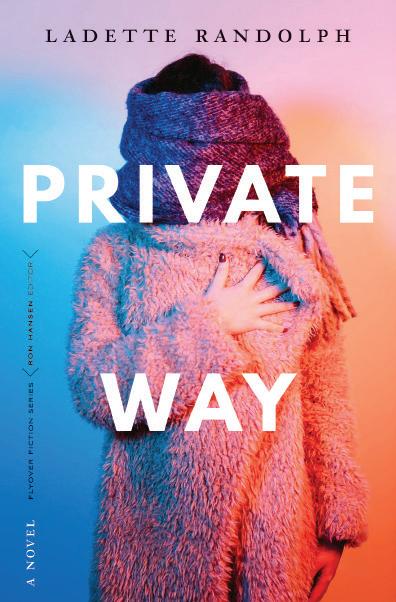
MARCH 270 pp. • 5 ½ x 8 ½ $21.95T • paperback • 978-1-4962-3049-2 $28.00 Canadian / £16.99 UK
Flyover Fiction Ron Hansen, series editor
ALSO OF INTEREST
is Is Not the Tropics
Stories Ladette Randolph $24.95 • paperback • 978-1-4962-2986-1
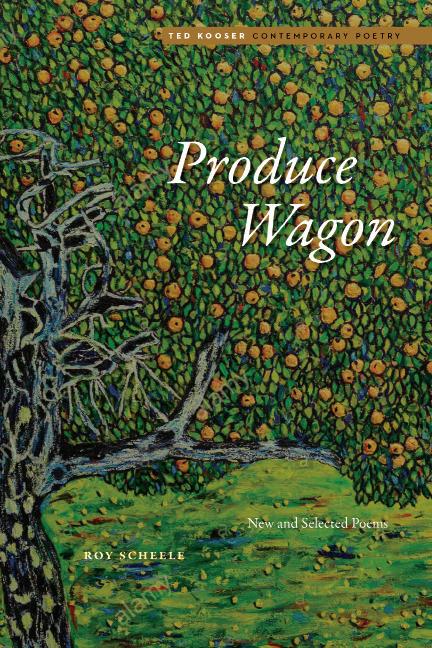
Roy Scheele is professor emeritus of English at Doane University. He is the author of a dozen chapbooks and collections, including A Far Allegiance (Backwaters Press, 2010) and e Sledders. His verse and prose poems have been frequently anthologized, most notably in Strong Measures and Models of the Universe.
APRIL 146 pp. • 6 x 9 $19.95T • paperback • 978-1-4962-3057-7 $25.50 Canadian / £14.99 UK
Ted Kooser Contemporary Poetry Ted Kooser, series editor
Produce Wagon
New and Selected Poems
ROY SCHEELE INTRODUCTION BY TED KOOSER
e poems in Produce Wagon explore the vast and varied circumstances of the human experience. Roy Scheele delves into his love for his wife in “Remembrances,” the opening poem from his rst chapbook, and “Driving after Dark”; his fascination with the natural world in poems such as “How the Fox Got Away” and “Late Autumn Woods”; his appreciation of his family in “A Kitchen Memory” and “ e Long Rise”; and his fondness for stories in “ e Carny Circuit” and “In the Clear.” In these and the other poems in the collection, Scheele uses a variety of traditional verse forms as well as free verse and syllabics, carefully tting the form of each poem to his subject matter. ough most of the poems are set in Nebraska and neighboring states, there is a universality to the subjects Scheele addresses. In these poems anywhere is everywhere.
“Roy Scheele is a poet of deep observation and patient discernment. Exquisite in prosody and immaculate in precision, each poem is a hall of mirrors where memory and desire refract o the sharp edges of the observable world.”—Nina Murray, author of Alcestis in the Underworld
“A lifetime’s collection of small and precious things: the pinpoints of the senses, the topography of the soul, these myriad wonders of eloquent plainsong—Roy Scheele’s incomparable, revelatory landscapes of acuity and a ection.”—Stephen Behrendt, author of Refractions and other collections
“Ted Kooser’s observation has it right: this gorgeous book is first and always music, but enriched by unforgettable imagery, compelling narrative, and ekphrasis. Scheele creates Nebraska—that former sea now prairie—as the setting of the poet’s life, here hauntingly worded, inhabited, and enlivened by intimate memory.”—Rhina P. Espaillat, author of And After All
ALSO OF INTEREST
e Track the Whales Make
New and Selected Poems Marjorie Saiser Introduction by Ted Kooser $19.95 • paperback • 978-1-4962-2812-3
An Otherwise Healthy Woman
AMY HADDAD
e poems in An Otherwise Healthy Woman delve into the complexity of modern health care, illness, and healing, o ering an alternative narrative to heroics and miracles. Drawing on Amy Haddad’s rsthand experiences as a nurse and patient, the poems in this collection teach us to take a moment to stop and acknowledge the longing for compassion in each of us, whar ought to be the immediate human response to su ering. e poet isn’t afraid to explore her own fears and failures or to nd joy and humor in the many roles women play. An Otherwise Healthy Woman presents the intimate experiences of a nurse, the vulnerable perspective of a patient, and the lessons of caring for family.
“A clear-eyed look at what it is to be on both sides of America’s health care system, this book of poems o ers rare insight into the humanity of the health care professional and the humanity of the patient. Spare and truthful, sorrowful and wise, these poems are necessary in both their deep empathy and their fierce gaze into mortality.”—Ada Limón, author of The Carrying, winner of the National Book Critics Circle Award
“Amy Haddad’s poems impress and move as much for their implacable precision as their empathetic alertness to the variations of human pain in the twenty-first century, across a family, an individual life, a world. An Otherwise Healthy Woman is, as one of her poem titles tags it, a ‘hire-wire’ act, at once accomplished and devastating.”—Robert Polito, author of Hollywood and God
“The stories weave in and out with an incredible understatement that brings the stakes out to you like a slap.”—Matt Mason, Nebraska state poet
“Haddad’s poems are masterfully crafted and painfully honest—at moments, even harrowing. Yet here is a poet who, when the tension gets to be almost more than the reader can bear, o ers up her own brilliant brand of comic relief. One of the strongest collections of poetry I have read in years.”—Cathy Smith Bowers, former poet laureate of North Carolina and author of The Abiding Image Amy Haddad is professor emerita in the School of Pharmacy and Health Professions at Creighton University. She is the author of the chapbook e Geography of Kitchens and has published poetry in a number of journals, including Aji Magazine, Persimmon Tree, and DASH Literary Journal.
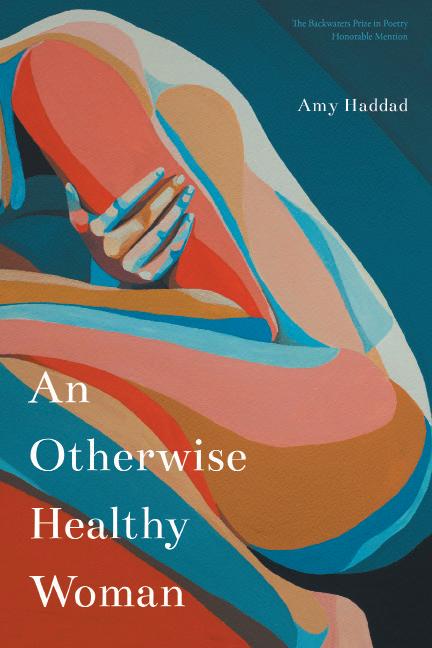
MARCH 78 pp. • 6 x 9 $15.95T • paperback • 978-1-4962-2785-0 $20.00 Canadian / £11.99 UK
e Backwaters Prize in Poetry Honorable Mention
ALSO OF INTEREST
Unholy Heart
New and Selected Poems Grace Bauer $19.95 • paperback • 978-1-4962-2594-8








Stephen R. Jones is an environmental consultant and breeding bird ecologist in Boulder, Colorado. He is the author of e Last Prairie: A Sandhills Journal (Bison Books, 2006) and the leading coauthor of the 2004 Peterson Field Guide Series book, A Field Guide to the North American Prairie.
APRIL 172 pp. • 6 x 9 $19.95T • paperback • 978-1-4962-3027-0 $25.50 Canadian / £14.99 UK
ALSO OF INTEREST
ose of the Gray Wind
The Sandhill Cranes, New Edition Paul A. Johnsgard With a new preface and afterword by the author $14.95 • paperback • 978-1-4962-0157-7
Nourishing Waters, Comforting Sky
irty-Five Years at a Sandhills Oasis
STEPHEN R. JONES
In the Nebraska Sandhills, ranchers on horseback and in pickup trucks share the range with pronghorn antelope, burrowing owls, and long-billed curlews. e native grasses grow greener as the cattle grow fatter. roughout the region, river otters and mink swim in streams nourished by springs bubbling up from the High Plains (Ogallala) aquifer. Over years of close observation, Stephen R. Jones has gotten to know the Nebraska Sandhills—the twentythousand-square-mile expanse of stunning prairie and thriving wetlands. He has felt the warm breath of a white-tailed doe guarding her spotted fawn, learned to communicate with a family of long-eared owls, and developed an improbable hiking relationship with a wild turkey. He has documented a breeding bird population that is growing more diverse and witnessed the long-awaited return of nesting trumpeter swans. ese personal stories, accompanied by words of insight from Native American leaders, Sandhills ranchers, and grassland ecologists, help us envision a quiet relationship with the natural world.
“If you want to experience what poet Wendell Berry calls ‘the peace of wild things,’ read Nourishing Waters, Comforting Sky. Stephen Jones lends us his naturalist’s eye and compassionate sensibility . . . to bring us intimately close to this natural treasure of subtle and stunning beauty.”—Chris Ho man, author of The Hoop and the Tree
“Nourishing Waters, Comforting Sky stands brilliantly at the confluence of science, history, and poetry. Only Stephen Jones, the Thoreau of the Nebraska Sandhills, could so powerfully reveal the mystery of one of the last remaining wild places.”—Christina Nealson, author of Living on the Spine and Drive Me Wild
“This is almost spiritual reading. Jones has an intimate knowledge of the Sandhills, and he combines that beautifully with reflections on the human experience. . . . Jones writes with grace, passion, and love for the world.”—John J. O’Keefe, professor of theology and journalism at Creighton University and producer of the documentary film Waves in the Sandhills
MEMOIR / ENVIRONMENT / FAMILY & RELATIONSHIPS / OUTDOOR ADVENTURE Uphill Both Ways
Hiking toward Happiness on the Colorado Trail
ANDREA LANI
One grouchy husband. ree reluctant kids. Five hundred miles of wilderness. And one woman, determined to escape the humdrum existence of modern parenting and a toxic work environment and to confront the history of environmental damage wreaked by westward expansion and the Anthropocene.
In Uphill Both Ways Andrea Lani walks us through the Southern Rockies, describing how the region has changed since the discovery of gold in 1859. At the same time, she delves into the history of her family, who immigrated to Leadville to work in the mines, and her own story of hiking the trail in her early twenties before returning two decades later, a depressed middle-aged mom in East Coast exile seeking happiness in a childhood landscape.
On the 489-mile trek from Denver to Durango on the Colorado Trail, Lani’s family traveled through stunning scenery and encountered wild owers, wildlife, and too many other hikers. ey ate cold oatmeal in a chilly, wet tent and experienced scorching heat, torrential thunderstorms, and the rst nip of winter. Her kids grew in unimaginable ways, and they became known as “the family of ve,” an oddity along a trail populated primarily by solo men. As they inched along the trail, Lani began to exercise disused smile muscles, despite the challenges of hiking in a middle-aged body, maintaining her children’s safety and happiness, and contending with marital discord. She learned that being a slow hiker does not make one a bad hiker and began to uncover the secret to happiness.
“Andrea Lani is an insightful guide as she takes readers on a fateful family hiking trip along the legendary Colorado Trail.” —Aaron Hamburger, author of Nirvana Is Here
“Andrea Lani seamlessly weaves history, geology, and ecology in Uphill Both Ways, a moving memoir about nature, family, and learning to live in the moment.”—Kate Hopper, author of Ready for Air and Use Your Words
“If you put Terry Tempest Williams and Cheryl Strayed and Kelly Corrigan in a room together, this is the book they would write. I loved it.”—Catherine Newman, author of Catastrophic Happiness Andrea Lani has lived in Maine for two decades, where she raised three sons, worked in the environmental eld, and became certi ed as a Maine master naturalist, but her heart has remained in Colorado, where she was born and raised. She’s a senior editor at Literary Mama and writes ction and non ction with a focus on family and the natural world.
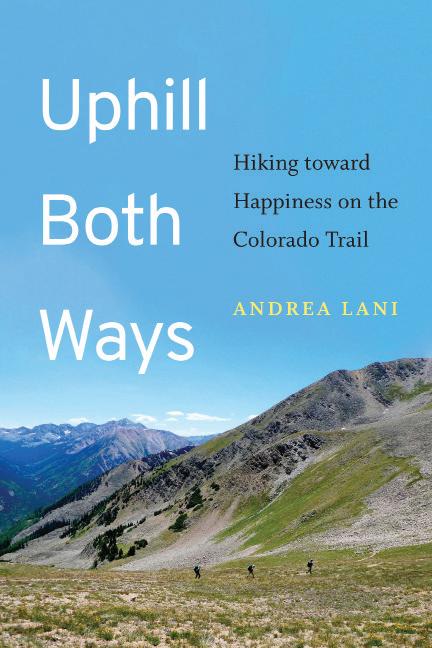
MARCH 320 pp. • 6 x 9 • 13 photographs, 16 illustrations, 1 map, 1 appendix $21.95T • paperback • 978-1-4962-2900-7 $28.00 Canadian / £16.99 UK
ALSO OF INTEREST
Almost Somewhere
Twenty-Eight Days on the John Muir Trail Suzanne Roberts $19.95 • paperback • 978-0-8032-4012-4
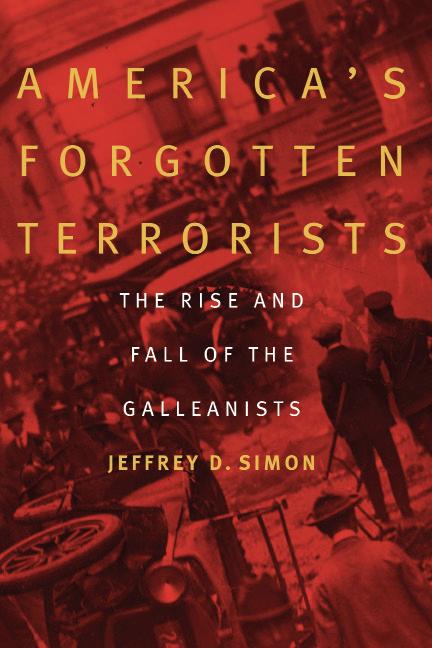
Jeffrey D. Simon is president of Political Risk Assessment Company, Inc., a security and terrorism research consulting company in Santa Monica, California, and a visiting lecturer in the Department of Political Science at UCLA. He is the author of e Alphabet Bomber: A Lone Wolf Terrorist Ahead of His Time (Potomac Books, 2019), Lone Wolf Terrorism: Understanding the Growing reat, and e Terrorist Trap: America’s Experience with Terrorism. Visit his website at www .futureterrorism.com.
MAY 320 pp. • 6 x 9 • 25 photographs, 2 illustrations, index $34.95T • hardcover • 978-1-64012-404-2 $44.00 Canadian / £26.99 UK
America’s Forgotten Terrorists
e Rise and Fall of the Galleanists
JEFFREY D. SIMON
ough largely forgotten today, one of the most destructive terrorist groups in the United States was the Galleanists, a ery band of Italian anarchists active during the early 1900s. In America’s Forgotten Terrorists, Je rey D. Simon shows how alienation and frustration among segments of a community were transformed into a militant extremist movement.
Luigi Galleani, a gifted writer and speaker, tapped into widespread disappointment among Italian immigrants concerning their lives in America. Unemployment, low wages, long working hours, discrimination, and a poor quality of life made many Italian immigrants receptive to his words. e Galleanists introduced terrorist tactics and strategies that are still used today: they were the rst group to send package bombs across the country and to exploit the media for their own advantage. One of their members is also suspected of launching the rst vehicle bomb in the United States in 1920, considered the worst act of domestic terrorism until the 1995 Oklahoma City bombing. e story of the Galleanists is a chilling journey through a volatile period in American history, including labor-management con icts, World War I, and the Red Scare. An expert in terrorism, Simon o ers striking insights into the Galleanist era and some of its eerie connections to modern America, calling us to recognize the risks of repeating our history. How the Galleanists operated and how the U.S. government responded hold lessons for today as we continue to deal with the threat of terrorism.
“America’s Forgotten Terrorists tells the incredible tale of the Galleanists—and tells it well. Little known today, the Galleanists made headlines a century ago with dramatic acts of terrorist violence, recounted here in fascinating and often shocking detail. In doing so, they forced Americans to confront issues of civil liberties, inequality, immigration, and state power that still resonate today.”—Beverly Gage, professor of history and American studies at Yale University and author of The Day Wall Street Exploded: A Story of America in Its First Age of Terror
“Astute and valuable. . . . Simon’s book is a long-overdue examination of the Galleanists. It is a major contribution to the field of terrorism and an indispensable research gift for future historians.” —Dennis Pluchinsky, former senior intelligence analyst in the O ce of Intelligence and Threat Analysis, U.S. Department of State
“This is a fascinating and compelling story of a little-known terrorist movement in which we find wisdom to navigate the terrorism of our times.”—J. Reid Meloy, clinical professor of psychiatry at the University of California–San Diego and consulting psychologist for the FBI’s Behavioral Analysis Unit
ALSO OF INTEREST
e Alphabet Bomber
A Lone Wolf Terrorist Ahead of His Time Jeffrey D. Simon $29.95 • hardcover • 978-1-61234-996-1
e Devil’s Toy Box
Exposing and Defusing Promethean Terrorists
ANDREW FOX
A Promethean technology is one that allows someone of average resources, skills, and intelligence to carry out actions that were once only doable by governments, militaries, or institutions with considerable resources. Essentially, Promethean technologies allow users to create their own weapons of mass destruction. ese emerging technologies are increasingly a ordable and accessible—and are no more complicated to operate than a satellite TV control box or a smart phone. Although these technologies are a terrifying prospect, the more we know about these dangers, the better we can prepare to head them o .
In e Devil’s Toy Box, Andrew Fox lays out seven decades of preemptive analysis and shows that while homeland security has explored, in depth, the possible Promethean threats the world faces, it has failed to forecast the most likely attacks. Using ctional scenarios Fox teaches how to predict future threats and how to forecast which ones are likely to be used by bad actors within the next ve to ten years. Combining the skills of homeland security experts and the imaginations of speculative ction writers, he then o ers an analytical method to deter, counter, or abate these threats, rather than adopting an attitude of resigned fatalism.
“A fascinating, frightening weave of fiction and fact that brings to life real-world threats—so true it’s terrifying. I’m astonished that Fox’s book isn’t classified at the highest level, as terrorists could exploit these civilization-ending technologies. I only hope our government is frantically working to prevent these scenarios from coming true!” —Col. Doug Beason, U.S. Air Force (Ret.), former associate laboratory director for threat reduction, Los Alamos National Laboratory
“In chilling—but realistic—scenarios of future terrorism, Andrew Fox presents plausible surprise attacks that America may face from enemies foreign and domestic. But he also proposes a realistic method for intervention and prevention, utilizing America’s untapped resources of imagination, creativity, and teamwork.”—Arlan Andrews, former White House fellow in the O ce of Science and Technology Policy and founder of Sigma, the science fiction think tank
“This is a thoughtful, highly imaginative, and fact-rich book of great interest to readers far beyond the national security and defense communities.”—Amy Sterling Casil, author of Digital Forensics: Investigating Data and Pathology: Examining the Body for Clues Andrew Fox has worked for the Department of Homeland Security for more than ten years, starting with the Federal Emergency Management Agency in the wake of Hurricane Katrina. He is currently a management and program analyst for a federal homeland security law enforcement agency. Fox is also a proli c writer of speculative ction, including the Fat White Vampire series.








JUNE 264 pp. • 6 x 9 • 1 illustration, 3 tables, index $32.95T • hardcover • 978-1-64012-479-0 $41.50 Canadian / £24.99 UK
ALSO OF INTEREST
Innovating in a Secret World
The Future of National Security and Global Leadership Tina P. Srivastava $29.95 • hardcover • 978-1-64012-086-0
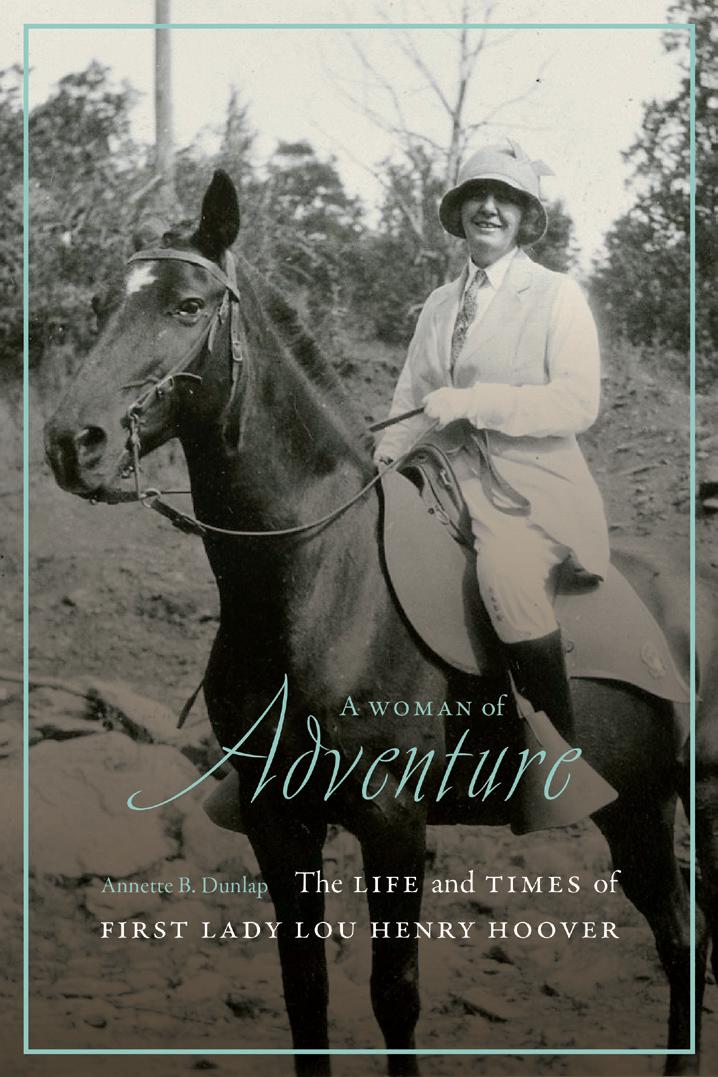
Annette B. Dunlap is an independent scholar and journalist. She is the author of Frank: e Story of Frances Folsom Cleveland, America’s Youngest First Lady, e Gambler’s Daughter: A Personal and Social History, and Charles Gates Dawes: A Life.
JUNE 320 pp. • 6 x 9 • 21 photographs, index $32.95T • hardcover • 978-1-64012-515-5 $41.50 Canadian / £24.99 UK
ALSO OF INTEREST
e Better Angels
Five Women Who Changed Civil War America Robert C. Plumb Foreword by Elisabeth Griffith $32.95 • hardcover • 978-1-64012-223-9
A Woman of Adventure
e Life and Times of First Lady Lou Henry Hoover
ANNETTE B. DUNLAP
When Lou Henry married Herbert Hoover in February 1899, she looked forward to a partnership of equality and a life of adventure. She could re a ri e and sit a horse as well as any man. e Quaker community of Whittier, California, where she lived as a teen, reinforced the egalitarian spirit of her upbringing. But history had other ideas for Lou Henry Hoover.
For the rst fteen years of married life, Lou globetrotted with her husband as he pursued a lucrative career in mining engineering and consulting. World War I not only changed the map of the world, it changed the map of the Hoovers’ marriage. Herbert Hoover’s Commission for the Relief of Belgium launched him into a political career that led to the White House. Lou, who detested the limelight, led a dual life: she supported her husband’s political career, managed their multiple households, and saw to the needs of their family. Behind the scenes, she pursued her own interests.
History has long since forgotten the breadth of her achievements, but Lou Henry Hoover’s powerful legacy endures in the ongoing success of the Girl Scouts, the music and physical therapy degree programs at Stanford University, athletic opportunities for women, and the countless unknown men and women who received an education thanks to Lou’s anonymous nancial support.Conveying Lou’s humor, personality, and intelligence, A Woman of Adventure takes a fresh look at the rst lady who preceded Eleanor Roosevelt and her also-extraordinary accomplishments.
“Lou [Henry Hoover] broke many glass ceilings for women and was important before she ever set foot in the White House. [She] traveled with her husband, translated for him, and contributed to a textbook he wrote. She worked with her husband far more than most other previous First Ladies, and yet their partnership fell apart at the White House. That story alone deserves our attention in this study of a First Lady.”—Cynthia D. Bittinger, author of Grace Coolidge: Sudden Star
“A Woman of Adventure is an overdue portrait of Lou Henry Hoover, a trailblazing First Lady. Dunlap’s revealing research chips away at the societal veneer of a networking public figure to reveal the inner warmth, wit, and personal hard choices of a woman bound by duty. Dunlap’s gripping narrative brings a fresh understanding of Lou’s life and times with sharp observations and historical acuity. Interweaved with poignant quotes, the book allows Lou to speak for herself in her own terms, independent of the man she married.”—Michelle Gullion, director of collections and research at the National First Ladies’ Library
WORLD & NATIONAL AFFAIRS / AUTOBIOGRAPHY / AMERICAN HISTORY / WORLD HISTORY Eye on the World
A Life in International Service
ANTHONY C. E. QUAINTON
Eye on the World is the autobiography of diplomat Anthony C. E. Quainton, the story of a long and varied life lived in eleven countries on six continents. Rather than a formal history, this is Quainton’s re ection on his interactions with the events of those times, beginning with George VI’s historic visit to North America in 1939, through the years of the Cold War, the e orts to contain and then defeat the Soviet Union, and nally the two decades of uneasy peace that came after the fall of the Berlin Wall. To some of these events Quainton was merely a spectator. In other areas––India, Nicaragua, Kuwait, and Peru––he was actively involved either as a participant in the policy process in Washington or as the senior representative of the United States in those countries.
Spanning his upbringing and education through two decades after his retirement, Quainton describes the expanding horizons of a middle-class boy from the northwest corner of North America as he encountered the complexity of the world in which he spent his professional life. Quainton served in seven di erent presidential appointments under presidents Gerald Ford, Jimmy Carter, Ronald Reagan, George H. W. Bush, and Bill Clinton. ese included four ambassadorships in distinct parts of the world and three assistant secretary–level posts in Washington. is range of geographic and functional assignments was unique in his generation of Foreign Service o cers.
“Lively, refreshingly candid, and occasionally self-critical. . . . A superb account of an exemplary diplomatic career that took place during the latter half of the Cold War. It should be of strong interest to those who lived the period as well as those aspiring to diplomatic careers of their own.”—John Negroponte, former U.S. deputy secretary of state and director of national intelligence
“Highly readable. . . . Interesting experiences and insights inform and educate in as good a revelation of what it means to be a diplomat as you will find. Ambassador Quainton does not hesitate to relate foible and faults and does so with humility and grace, reflecting a moral compass in a complex world . . . while dealing with terror and the personnel system of the State Department.”—Thomas R Pickering, former undersecretary of state and ambassador to Jordan, Nigeria, El Salvador, Israel, the United Nations, India, and Russia
“Distinguished diplomat and professor Anthony Quainton documents changes and constants in American diplomacy. . . . Recounting a fascinating and self-reflective life story with charming prose, the author casts light on the complexities of foreign policy making and points to opportunities for improvements. A must-read for aspiring internationalists and for pragmatic private citizens.”—Louis W. Goodman, professor of international relations and emeritus dean of the School of International Service at American University Anthony C. E. Quainton is distinguished diplomat in residence emeritus at American University. After nearly twenty years as a United States Foreign Service o cer he became director of the State Department’s O ce for Combating Terrorism, a post he held until 1981, when President Ronald Reagan named him United States ambassador to Nicaragua. Reagan later appointed him ambassador to Kuwait, and President George H. W. Bush named him ambassador to Peru. Quainton served as director general of the Foreign Service from December 1995 to August 1997.
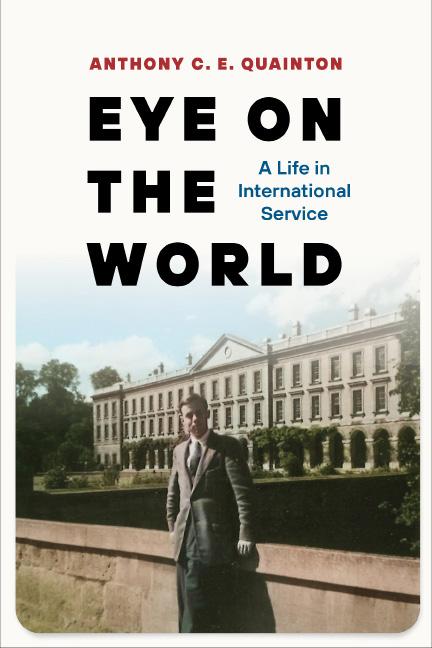
JULY 328 pp. • 6 x 9 • 10 photographs, 1 illustration, index $34.95T • hardcover • 978-1-64012-403-5 $44.00 Canadian / £26.99 UK
ADST-DACOR Diplomats and Diplomacy Margery Boichel ompson, series editor
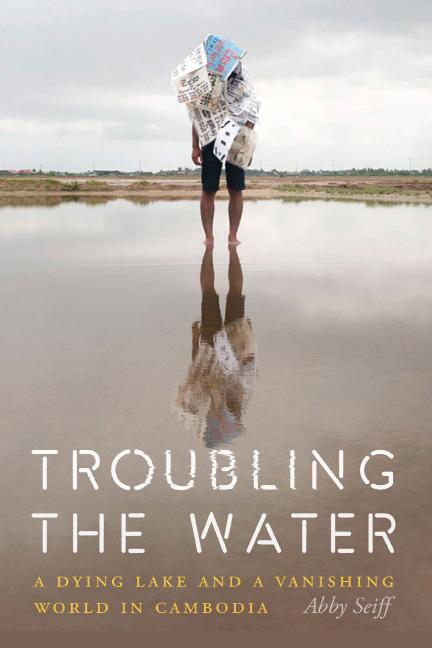
Abby Seiff is a journalist who was based in Southeast Asia for nearly a decade, working as an editor at the Cambodia Daily and the Phnom Penh Post and writing for publications such as Time, the Economist, Al Jazeera, and Paci c Standard, among others. She is now a freelance correspondent.
Troubling the Water
A Dying Lake and a Vanishing World in Cambodia
ABBY SEIFF
In this intimate account of one of the world’s most productive inland sheries, Troubling the Water explores how the rapid destruction of a single lake in Cambodia is upending the lives of millions. e abundance of Cambodia’s Tonle Sap Lake helped grow the country for millenia and gave rise to the Kingdom of Angkor. Fed by the rich, mud-colored waters of the powerful Mekong River, the lake owes its vast bounty to an ecological miracle that has captivated poets, artisans, and explorers throughout history.
But today, the lake is dying. Hydropower dams hold back billions of gallons of water and disrupt critical sh migration paths. On the lake, illegal shing abetted by corruption is now unstoppable. A fast-changing climate, meanwhile, has seen a string of devastating droughts.
Troubling the Water follows ordinary Cambodians coping with the rapid erasure of a long-held way of life. Drawing on years of reporting in Cambodia, Abby Sei traces the changes on the Tonle Sap—weaving together vivid stories of those most a ected with sharp insight into one of the most threatened lakes in the world. For the millions who depend on it, the stakes couldn’t be higher.
“A haunting and lyrical eulogy to Cambodia’s once magnificent Tonle Sap Lake and the water culture of Cambodia.”—Elizabeth Becker, author of You Don’t Belong Here: How Three Women Rewrote the Story of War
MARCH 168 pp. • 6 x 9 • 11 photographs, 1 map, index $21.95T • paperback • 978-1-64012-476-9 $28.00 Canadian / £16.99 UK
“Groundbreaking. . . . The author exposes the human costs of [the Tonle Sap’s degradation] with empathy and a deep understanding of the issues involved.”—Milton Osborne, author of The Mekong: Turbulent Past, Uncertain Future
“The destruction of human life can occur slowly, indirectly, and even imperceptibly, which makes it no less of a crime. . . . This book reminds us of how much our humanity is connected to our environment.”—Youk Chhang, founder and executive director of Documentation Center of Cambodia
ALSO OF INTEREST
Ogallala
Water for a Dry Land John Opie, Char Miller, and Kenna Lang Archer $35.00 • paperback • 978-0-8032-9697-8
e Turtle and the Dreamboat
e Cold War Flights at Forever Changed the Course of Global Aviation
JIM LEEKE
e Turtle and the Dreamboat is the rst detailed account of the race for long-distance ight records between the U.S. Army and U.S. Navy less than fourteen months after World War II. e ights were risky and unprecedented. Each service intended to demonstrate its o ensive capabilities during the dawning nuclear age, a time when America was realigning its military structure and preparing to create a new armed service—the United States Air Force. e rst week of October 1946 saw the conclusion of both record-breaking, nonstop ights by the military iers. e rst aircraft, a two-engine U.S. Navy P2V Neptune patrol plane nicknamed the Truculent Turtle, ew more than eleven thousand miles from Perth, Western Australia, to Columbus, Ohio. e Turtle carried four war-honed pilots and a young kangaroo as a passenger. e second plane, a four-engine U.S. Army B-29 Superfortress bomber dubbed the Pacusan Dreamboat, ew nearly ten thousand miles from Honolulu to Cairo via the Arctic. Although presented as a friendly rivalry, the two ights were anything but collegial. ese military missions were meant to capture public opinion and establish aviation leadership within the coming Department of Defense.
Both audacious ights above oceans, deserts, mountains, and icecaps helped to shape the future of worldwide commercial aviation, greatly reducing the length and costs of international routes. Jim Leeke provides an account of the remarkable and record-breaking ights that forever changed aviation.
“Never again will I take a transatlantic flight without thinking of the pioneering missions of the Turtle and the Dreamboat—sleek, superbly engineered aircraft piloted by war heroes who shattered the barriers of global travel.”—Anne R. Keene, author of The Cloudbuster Nine: The Untold Story of Ted Williams and the Baseball Team That Helped Win World War II
“A very readable and e ective narrative of postwar flights that were largely forgotten by historians. The Turtle and the Dreamboat should find an eager audience among aviation, military aviation, and Cold War history enthusiasts and scholars. Strongly recommended.” —Ron Kaplan, executive director of the Ohio Air & Space Hall of Fame and Learning Center Jim Leeke is a former news journalist, retired copywriter and creative director, and a U.S. Navy veteran. He is the author of several books, including e Best Team Over ere: e Untold Story of Grover Cleveland Alexander and the Great War (Nebraska, 2021) and From the Dugouts to the Trenches: Baseball during the Great War (Nebraska, 2017).







JUNE 248 pp. • 6 x 9 • 18 photographs, 1 appendix, index $29.95T • hardcover • 978-1-64012-413-4 $38.00 Canadian / £22.99 UK
ALSO OF INTEREST
Speed
The Life of a Test Pilot and Birth of an American Icon Bob Gilliland and Keith Dunnavant Foreword by Chesley “Sully” Sullenberger $34.95 • hardcover • 978-1-64012-268-0








Alice Beck Kehoe is a professor of anthropology emeritus at Marquette University. She is the author or editor of twenty books, including North American Indians: A Comprehensive Account, e Land of Prehistory: A Critical History of American Archaeology, and North America Before the European Invasions.
MARCH 224 pp. • 6 x 9 • 23 photographs, 1 appendix $24.95T • paperback • 978-1-4962-2936-6 $31.50 Canadian / £18.99 UK
ALSO OF INTEREST
Cora Du Bois
Anthropologist, Diplomat, Agent Susan C. Seymour $39.50 • hardcover • 978-0-8032-6295-9
Girl Archaeologist
Sisterhood in a Sexist Profession
ALICE BECK KEHOE
Girl Archaeologist recounts Alice Kehoe’s life, begun in an era very di erent from the twenty- rst century in which she retired as an honored elder archaeologist. She persisted against entrenched patriarchy in her childhood, at Harvard University, and as she did eldwork with her husband in the northern plains. A senior male professor attempted to quash Kehoe’s career by raping her. Her Harvard professors refused to allow her to write a dissertation in archaeology. Universities paid her less than her male counterparts. Her husband refused to participate in housework or childcare.
Working in archaeology and in the histories of American First Nations, Kehoe published a series of groundbreaking books and articles. Although she was denied a conventional career, through her unconventional breadth of research and her empathy with First Nations people she gained a wide circle of collaborators and colleagues. roughout her career Kehoe found and fostered a sisterhood of feminists— strong, bright women archaeologists, anthropologists, and ethnohistorians who have been essential to the eld.
Girl Archaeologist is the story of how one woman pursued a professional career in a male-dominated eld during a time of great change in American middle-class expectations for women.
“Girl Archaeologist is everything Alice Beck Kehoe is—witty and irreverent while at the same time touching, honest, and open. . . . This book is necessary for anyone interested in archaeology’s less-than-welcoming history, especially in light of today’s calls for social justice, inclusion, and equity.”—Joe Watkins, president of the Society for American Archaeology, 2019–21
“Piercing, funny, and heartbreaking all at once, the story of Kehoe’s grit and perseverance in the face rampant sexism will keep you glued.”—Becky Cooper, author of We Keep the Dead Close
“Alice Kehoe is a living legend in archaeology. . . . She digs deep with self-reflection and searing honesty to survey her struggles and breakthrough achievements. . . . She persevered through it all with unbroken tenacity.”—Chip Colwell, author of Plundered Skulls and Stolen Spirits
AMERICAN HISTORY / WESTERN HISTORY / GREAT PLAINS / WOMEN, GENDER & SEXUALITY Birthing the West
Mothers and Midwives in the Rockies and Plains
JENNIFER J. HILL
Childbirth de nes families, communities, and nations. In Birthing the West, Jennifer J. Hill lls the silences around historical reproduction with copious new evidence and an enticing narrative, describing a process of settlement in the American West that depended on the nurturing connections of reproductive caregivers and the authority of mothers over birth.
Economic and cultural development depended on childbirth. Hill’s expanded vision suggests that the mantra of cattle drives and military campaigns leaves out essential events and falls far short of an accurate representation of American expansion. e picture that emerges in Birthing the West presents a more complete understanding of the American West: no less moving or engaging than the typical stories of extraction and exploration but concurrently intriguing and complex.
Birthing the West unearths the woman-centric practice of childbirth across Montana, the Dakotas, and Wyoming, a region known as a death zone for pregnant women and their infants. As public health entities struggled to establish authority over its isolated inhabitants, they collaborated with physicians, eroding the power and control of mothers and midwives. e transition from home to hospital and from midwife to doctor created a dramatic shift in the intimately personal act of birth. Jennifer J. Hill is an assistant teaching professor of American studies at Montana State University. She serves as the executive director of the Women’s Reproductive History Alliance, a digital museum dedicated to educating the public on reproductive history.







“Jennifer Hill puts women in the forefront of Western history and shows the equal importance of women’s worlds in the settling of the West. She writes clearly, thoughtfully, and, in places lyrically. Hill projects images wonderfully and makes her points well.”—Todd L. Savitt, author of Race and Medicine in Nineteenth- and Early-TwentiethCentury America
“Hill’s work is very important to the historiography of the northern Great Plains states. Looking through the lens of childbirth provides unique perspectives on family formation, regional professionalization, and Great Plains settler colonialism. One of the exciting elements of this book is how women create community and ‘reproduce’ the state. There are good local stories here to enjoy.”—Molly P. Rozum, author of Grasslands Grown: Creating Place on the U.S. Northern Plains and Canadian Prairies MARCH 320 pp. • 6 x 9 • 30 photographs, 2 illustrations, 1 map, index $24.95T • paperback • 978-1-4962-2685-3 $31.50 Canadian / £18.99 UK
ALSO OF INTEREST
She Can Bring Us Home
Dr. Dorothy Boulding Ferebee, Civil Rights Pioneer Diane Kiesel $26.95 • paperback • 978-1-64012-168-3
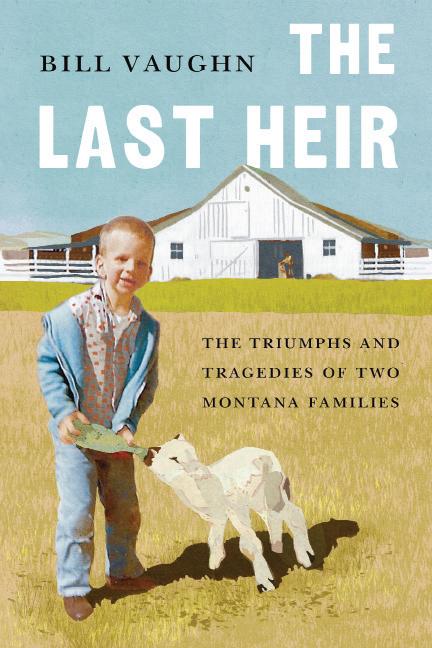
Bill Vaughn is a former contributing editor for Outside Magazine. His is the author of Hawthorn: e Tree at Has Nourished, Healed, and Inspired through the Ages.
MARCH 272 pp. • 6 x 9 • 7 photographs, 3 maps, 1 genealogy, 3 appendixes $19.95T • paperback • 978-1-4962-2975-5 $25.50 Canadian / £14.99 UK
ALSO OF INTEREST
Burning the Breeze
Three Generations of Women in the American West Lisa Hendrickson Afterword by James E. Pepper $21.95 • paperback • 978-1-4962-2792-8
e Last Heir
e Triumphs and Tragedies of Two Montana Families
BILL VAUGHN
e only thing the Herrins and the Burkes had in common was their Irish ancestry. Opposites in most ways, the families nevertheless personi ed two common threads in the history of the West. As the owner of an iconic Montana stock-raising operation—the famous Oxbow Ranch on the shores of Holter Lake—Holly Herrin ruled with frontier violence and legal action over an empire of cattle and sheep that covered thirty square miles. George Burke was a real estate agent, a sheri , a game warden, and a civil engineer in a family of professionals—newspaper editors, lawyers, and politicians, including a U.S. senator. e country-mouse Herrins voted Republican, the city-mouse Burkes Democratic. Both patriarchs, ghting with their sts and their lawyers, were active players in the far-reaching dramas and ludicrous comedies that shaped the politics and economy of modern Montana. In 1949 the clans joined their fortunes together when rancher Keith Herrin, Holly’s grandson, married George Burke’s daughter Molly, a wire service reporter. It was a union that produced ve girls and one boy—an heir. Twenty years later, the marriage and the Herrin ranches were failing. e story of the Burkes and Herrins has never been told before, and the history they made has been largely forgotten. e Last Heir recounts twelve decades of Burke and Herrin triumphs and tragedies: the story of Montana’s Missouri River heartland, a history seen through the eyes and daily lives of those who lived it.
“A dishy, encyclopedic romp through twentieth-century Montana history. I was amazed that a book containing so many disparate nuggets could hew to a narrative structure that enticed me to read it so quickly.”—John Clayton, author of Natural Rivals: John Muir, Gi ord Pinchot, and the Creation of America’s Public Lands
Oklahoma Odyssey
A Novel
JOHN MORT
In late fall of 1892 outlaw Eddie Mole gallops down the main street of Jericho Springs, Kansas, where he robs and shoots dead the freighter Barney Kreider. Some urge Barney’s son, Ulysses (“Euly”) to take revenge, but Euly is a Mennonite and Mennonites don’t seek revenge. Instead, Euly plots how to make his fortune with the aid of his half-Osage sister, Kate, and his friend Johnny, an Osage farmhand. e three make a plan to sell goods and livestock to the settlers converging on Caldwell, Kansas, for the land run going on in the Cherokee Outlet. When Johnny tracks Eddie into the Cherokee Outlet, he witnesses Bu alo Soldiers evicting him from a ranch, leaving it public domain, and Johnny and Kate make the run for that beautiful land. Euly follows close behind, even as Eddie, riding from Arkansas City, tries to reclaim his old ranch.
John Mort’s narrative is an anti-revenge novel—always opting for nonviolence. But there’s violence nonetheless, as Eddie and Barney’s survivors converge in a rousing nish. ough this novel uses some of the architecture and motifs of traditional Westerns, it is carefully researched and set in the unfolding of a pivotal, neglected historical event.
“One might expect a tale of murder and revenge à la True Grit, but John Mort has chosen, with his Mennonites in a new world, to tell a much richer, more forgiving story. And it’s a damn good one, culminating in that last land run. . . . I cannot recommend it highly enough.”—Tim Bazzett, author of Soldier Boy
“A spirited wide-angle Western with a revenge story at its core. . . . Deeply researched and empathetically imagined, this story explores the problematic convergence of Osages and Mennonites, pacifism and prejudice, as two sort-of brothers and a maybe-sister seek their fortunes in stolen territory. An invigorating read.”—Janet Burroway, author of Cutting Stone
“Oklahoma Odyssey, rich in character and western history, draws you in and doesn’t let go.”—Monty McCord, author of Mundy’s Law John Mort is a writer and farmer. He is the author of eleven books, including Soldier in Paradise and Down along the Piney: Ozark Stories. His short stories have appeared in a variety of publications, including the New Yorker, Missouri Review, the Chicago Tribune, the Arkansas Review, and Sixfold.







APRIL 332 pp. • 5 ½ x 8 ½ $24.95T • paperback • 978-1-4962-2973-1 $31.50 Canadian / £18.99 UK
ALSO OF INTEREST
Follow the Angels, Follow the Doves
The Bass Reeves Trilogy, Book One Sidney Thompson $19.95 • paperback • 978-1-4962-1875-9
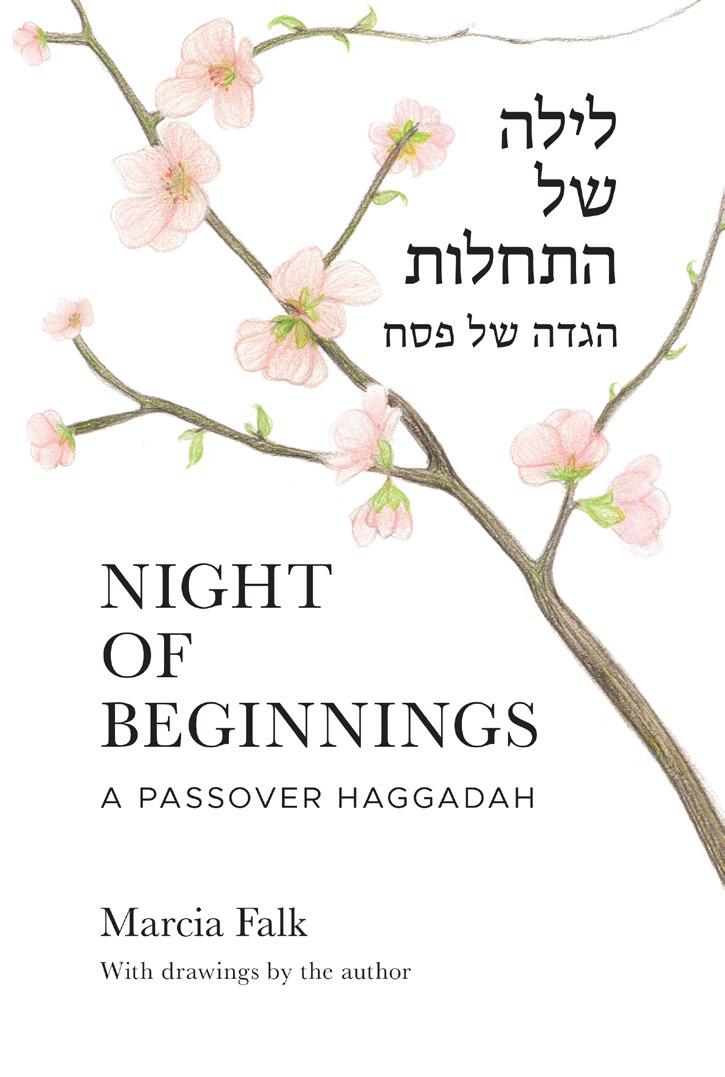
Marcia Falk is a poet, translator, liturgist, and artist known widely for her groundbreaking prayer books e Book of Blessings and e Days Between, which re-create Hebrew and English prayer from an inclusive, nonpatriarchal perspective. Falk is also the creator of a volume combining her art and poetry, Inner East: Illuminated Poems and Blessings, and other books of poetry and translation, including a now-classic translation of the Song of Songs.
MARCH 232 pp. • 6 ½ x 9 ½ • Fully illustrated in color $19.95T • paperback • 978-0-8276-1551-9 $25.50 Canadian / £14.99 UK
ALSO OF INTEREST
e JPS Commentary on the Haggadah
Historical Introduction, Translation, and Commentary Joseph Tabory Foreword by David M. Stern $40.00 • hardcover • 978-0-8276-0858-0
Night of Beginnings
A Passover Haggadah
MARCIA FALK
Night of Beginnings is a groundbreaking new haggadah for the Passover seder from acclaimed poet, translator, and liturgist Marcia Falk, beautifully designed and illustrated with original watercolor drawings by the author.
Unlike both traditional and new haggadahs, which do not contain a full recounting of the biblical story, Night of Beginnings presents the Exodus narrative in its entirety, providing a direct connection to the ancient origins of the holiday. is retelling highlights the actions of its female characters, including Miriam; Pharaoh’s daughter, who adopts the baby Moshe; and the midwives Shifrah and Pu’ah, who save the Hebrew male infants. Falk’s revolutionary new blessings, in Hebrew and English, replace the traditional, patriarchal seder blessings, and her kavanot— meditative directions for prayer—introduce a genre new to the seder ritual. Poems, psalms, and songs are arranged to give structural coherence to the haggadah. A new commentary raises interpretive questions and invites us to bring personal re ections into the discussion.
Like the author’s widely acclaimed previous prayer books, e Book of Blessings and e Days Between, Falk’s poetic blessings for the seder envision the divine as a Greater Whole of which we are an inseparable part. e inclusive language of Faulk’s blessings makes room for women to nd and use their voices more full-throatedly than they were able to do with the male-centered prayers inherited from the early rabbis. Men, too, will encounter here a spiritually moving and thought-provoking experience.
“Marcia Falk’s presentation of and commentary on the Exodus story invite rich conversation about the meanings of freedom on personal, communal, and political levels. Those familiar with Falk’s transformational work on Jewish blessings will be delighted by her new blessings for all parts of the seder, while those who are not yet acquainted with her blessings will find them a revelation.” —Judith Plaskow, author of Standing Again at Sinai and coauthor, with Carol P. Christ, of Goddess and God in the World
“In Night of Beginnings Marcia Falk continues the brilliant, groundbreaking work she began in her Book of Blessings. Her poetic voice seamlessly combines a profoundly feminist orientation with deep reading of Jewish tradition, and her sometimes daring kavanot (directions of the heart) encourage fresh conversation to renew the seder experience for contemporary participants.”—Rabbi David Teutsch, editor of Kol Haneshamah Reconstructionist prayer books
Choosing Hope
e Heritage of Judaism
DAVID ARNOW
roughout our history, Jews have traditionally responded to our trials with hope, psychologist David Arnow says, because we have had ready access to Judaism’s abundant reservoir of hope. e rst book to plumb the depths of this reservoir, Choosing Hope journeys from biblical times to our day to explore nine fundamental sources of hope in Judaism:
• Teshuvah—the method to ful ll our hope to become better human beings * Tikkun Olam—the hope that we can repair the world by working together • Abraham and Sarah—models of persisting in hope amidst trials • Exodus—the archetype of redemptive hope • Covenant—the hope for a durable relationship with the One of Being • Job—the “hard-fought hope” that brings a grief-stricken man back to life •World-to-Come—the sustaining hope that death is not the end • Israel—high hope activists work to build a just and inclusive society for all Israelis • Jewish Humor—“hope’s last weapon” in our darkest days
Grounded in a contemporary theology that situates the responsibility for creating a better world in human hands, with God acting through us, Choosing Hope can help us both a rm hope in times of trial and transmit our deepest hopes to the next generation.
“Choosing Hope is a blessing, a masterful illumination of the purpose and power of hope, an erudite feast of Jewish wisdom, and a wellspring of surprising, subversive, deeply satisfying epiphanies about the relationship between hope and all the emotions and experiences that comprise a life of meaning.”—Letty Cottin Pogrebin, author of Deborah, Golda, and Me
“A profound exploration of the meaning and claim of hope. . . . This extraordinary book bears witness to the core idea of Jewish faith itself: as an awakening to confront our sorrows and despair with the personal and communal ongoing task of tikkun.”—Moshe Halbertal, John and Golda Cohen Professor of Jewish Thought and Philosophy, Hebrew University
“David Arnow guides us gently, engagingly, and insightfully to see hope where we never noticed it before.”—Rabbi Judith Hauptman, E. Billi Ivry Professor Emerita of Talmud and Rabbinic Culture, Jewish Theological Seminary David Arnow is a scholar of the festival of Passover. He is the author of Creating Lively Passover Seders and coeditor of My People’s Passover Haggadah.

MARCH 328 pp. • 6 x 9 • 2 indexes $30.00S • paperback • 978-0-8276-1520-5 $38.00 Canadian / £22.99 UK
JPS Essential Judaism
ALSO OF INTEREST
Radiance
Creative Mitzvah Living Danny Siegel Edited by Rabbi Neal Gold Foreword by Rabbi Joseph Telushkin $26.95 • paperback • 978-0-8276-1502-1

Geoffrey D. Claussen is an associate professor of religious studies, chair of the Department of Religious Studies, and Lori and Eric Sklut Scholar in Jewish Studies at Elon University. He is the author of Sharing the Burden: Rabbi Símḥah Zissel Ziv and the Path of Musar and is a past president of the Society of Jewish Ethics.
APRIL 518 pp. • 6 x 9 • Index $35.00S • paperback • 978-0-8276-1350-8 $44.00 Canadian / £26.99 UK
JPS Anthologies of Jewish ought
ALSO OF INTEREST
Mesillat Yesharim
The Path of the Upright Moses Hayyim Luzzatto Translated by Mordecai M. Kaplan With a new introduction and commentary by Ira F. Stone $48.00 • hardcover • 978-0-8276-0856-6
Modern Musar
Contested Virtues in Jewish ought
GEOFFREY D. CLAUSSEN FOREWORD BY LOUIS E. NEWMAN
How do modern Jews understand virtues such as courage, humility, justice, solidarity, or love? In truth: they have ercely debated how to interpret them. is groundbreaking anthology of musar (Jewish traditions regarding virtue and character) explores the diverse ways seventy-eight modern Jewish thinkers understand ten virtues: honesty and love of truth; curiosity and inquisitiveness; humility; courage and valor; temperance and self-restraint; gratitude; forgiveness; love, kindness, and compassion; solidarity and social responsibility; and justice and righteousness. ese thinkers—from the Musar movement to Hasidism to contemporary Orthodox, Reform, Conservative, Reconstructionist, Renewal, Humanist, and secular Jews—often agree on the importance of these virtues but fundamentally disagree in their conclusions. e juxtaposition of their views, complemented by Geo rey Claussen’s pointed analysis, allows us to see tensions with particular clarity—and sometimes to recognize multiple compelling ways of viewing the same virtue.
By expanding the category of musar literature to include not only classic texts and traditional works in uenced by them but also the writings of diverse rabbis, scholars, and activists—men and women—who continue to shape Jewish tradition, Modern Musar challenges the elds of modern Jewish thought and ethics to rethink their boundaries—and invites us to weigh and re ne our own moral ideals.
“By expanding musar literature to include not only the texts of the Musar movement and those influenced by them but also liberal and secular Jewish thinkers, Claussen forces the fields of modern Jewish thought and ethics to rethink their boundaries.”—Yonatan Y. Brafman, assistant professor of religion, Tufts University
“A major, illuminating contribution to contemporary musar literature.” —Rabbi Ira F. Stone, Rosh Yeshiva, Center for Contemporary Mussar
“A mind-expanding view of Jewish ethical character development and a pedagogic tour de force. In juxtaposing contrasting perspectives—rather than a single ‘paradigmatically Jewish’ view of moral virtue—on many ethical issues, Professor Claussen compels us to consider divergent views of qualities of soul.”—Rabbi Amy Eilberg, senior faculty, the Mussar Institute
America and the Holocaust
A Documentary History
RAFAEL MEDOFF
e rst comprehensive volume to teach about America’s response to the Holocaust through visual media, America and the Holocaust: A Documentary History explores the complex subject through the lens of one hundred important documents that help illuminate and amplify key episodes and issues.
Each chapter pivots on ve key documents: two in image form and three in text form. Individual introductions contextualize the documents, and explanatory text, analysis of historical implications, and suggestions for further reading follow. A concluding state-of-the- eld essay documents how scholars have arrived at the presented information. A complementary teacher’s guide with questions for discussion is available online. e twenty chapters address a broad range of subjects and events, among them America’s response to Hitler’s rise, U.S. public opinion about Jews, immigration policy, the Wagner-Rogers bill to save children, American rescuers, news coverage of atrocities, American Jewish and Christian responses to the Holocaust, the campaign for U.S. rescue action, the question of bombing Auschwitz, and liberation.
Viewing real documents as a means to understanding core issues will deepen reader involvement with this material. High school and college students as well as general readers of all levels of knowledge will be engaged in understanding this crucial chapter in American history and weighing questions regarding mass atrocities in our own time.
“This is an important and long-overdue book—exactly the material students need to understand this crucial chapter in American history and inform them as they consider issues related to genocide in our own time.”—Bat-Ami Zucker, professor of American history at Bar Ilan University
“Replaces slogans with facts, uninformed opinions with information, and hyperbole with solid historical documents.”—Alan Berger, Raddock Family Eminent Scholar Chair for Holocaust Studies, Florida Atlantic University
“Highly impressive. This expertly constructed documentary history is a major contribution to understanding America’s response to the Holocaust.”—Steven T. Katz, Slater Chair in Jewish Holocaust Studies, Boston University Rafael Medoff is founding director of the David S. Wyman Institute for Holocaust Studies and the coeditor of the institute’s online Encyclopedia of America’s Response to the Holocaust. He has written more than twenty books about American Jewish history, the Holocaust, and related topics, including e Jews Should Keep Quiet: Franklin D. Roosevelt, Stephen S. Wise, and the Holocaust (JPS, 2019).
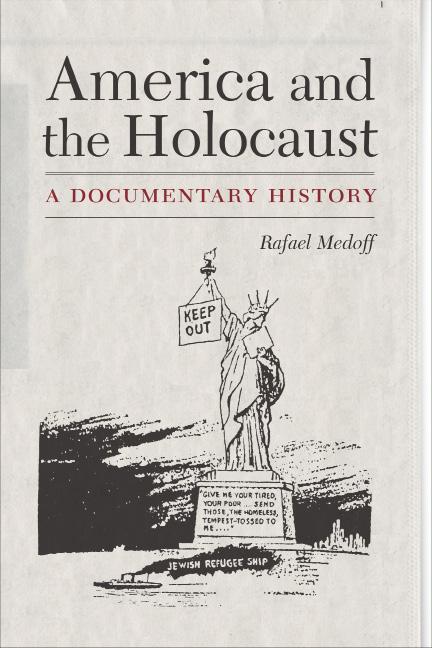
MAY 352 pp. • 8 ½ x 11 • 41 gures, 2 tables, index $30.00S • paperback • 978-0-8276-1518-2 $38.00 Canadian / £22.99 UK
ALSO OF INTEREST
Saving One’s Own
Jewish Rescuers during the Holocaust Mordecai Paldiel $70.00 • hardcover • 978-0-8276-1261-7







